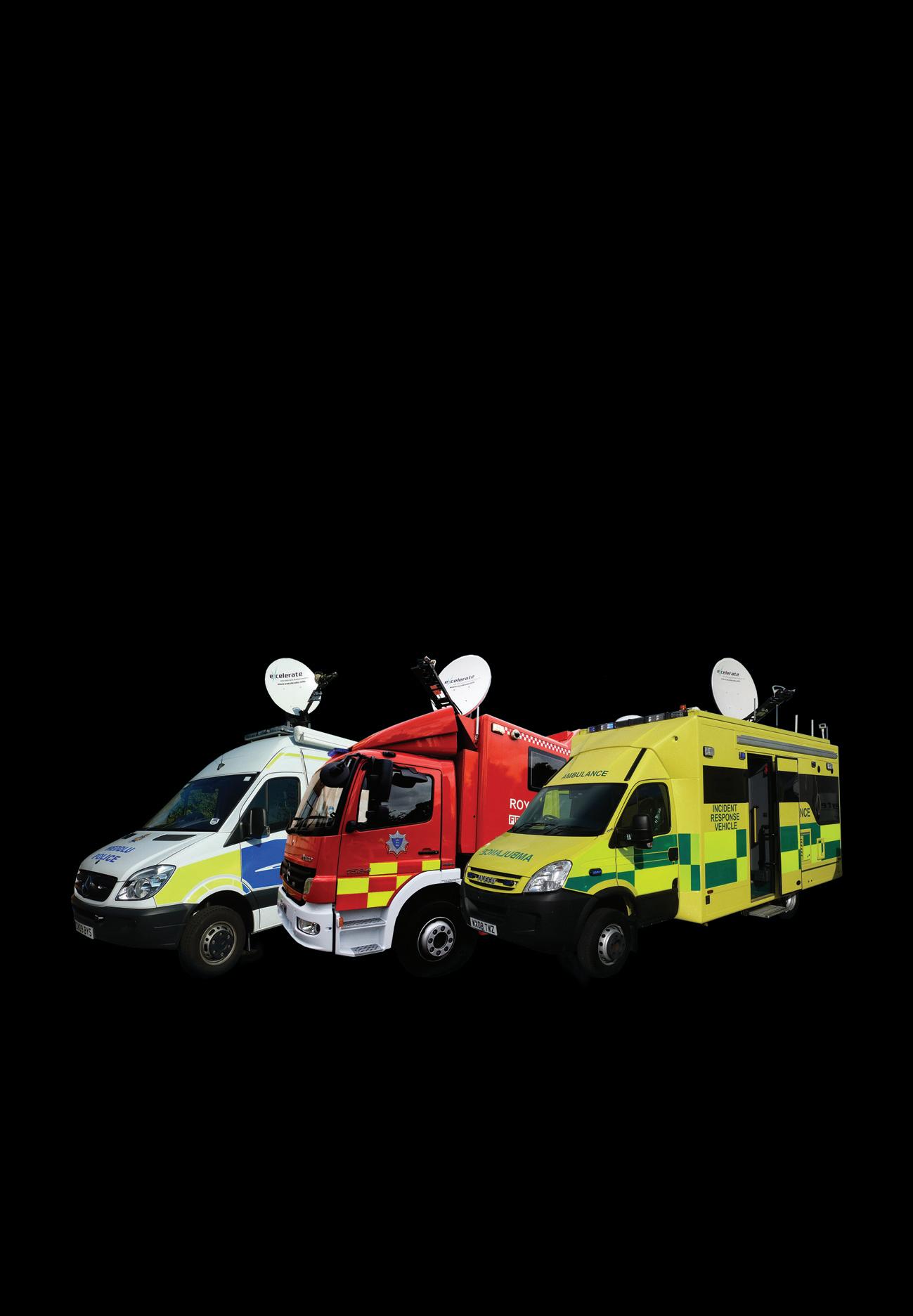
















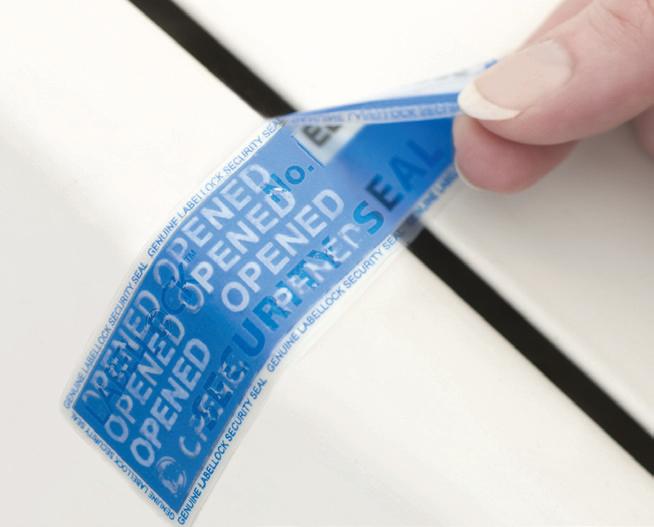
• Tamper evident
• Totally transferred void message
• Resists chemical and temperature attack
• Both label and surface show void
• Ultra-secure
• Unique subsurface numbers as standard
• Available from stock
• Customisation available

• Tamper evident
• High security
• No residue
• Unique subsur face numbers as standard
• Versatile and customisable
• Simple product range
• Available from stock






WITH THE FIFA WORLD CUP UNDERWAY, South African security forces are on high alert after reports of planned terror attacks during the event. Iraqi police have arrested a high-ranking army officer from Saudi Arabia who is accused of planning an attack, and with Pakistani and Somali militants allegedly running terror training camps in northern Mozambique, it has been suggested that trainees from these camps may have crossed into South Africa to join or form cells planning World Cup attacks. With crowds of 30,000-60,000 at each game the impact of an attack could be very serious.
226 High Rd, Loughton, Essex IG10 1ET. Tel: 020 8532 0055 Fax: 020 8532 0066
EDITOR Sofie Lidefjard
ASSISTANT EDITOR Angela Pisanu
PRODUCTION EDITOR Karl O’Sullivan
PRODUCTION ASSISTANT Jacqueline Grist
PRODUCTION CONTROLLER Reiss Malone
BUSINESS DEVELOPMENT Anthea Astley
SALES
Jackie Carnochan
ADMINISTRATION Charlotte Casey, Victoria Leftwich
PUBLISHER Sally Brockman
Barry Doyle


Efforts to reduce the vulnerability of crowded places is high on the agenda for the National Counter Terrorism Security Office (NaCTSO), who on page 9 discusses the need for the business community to understand the terrorist threat and the importance of putting defensive measures in place before an attack. In this issue we also have the Perimeter Security Suppliers Association raising some important questions relating to the use of the highest security perimeter products (p. 15), and of course we preview the most important security events coming up, such as the APA-ACPO National Policing Conference, Security Essen and Transport Security Expo.
Enjoy the issue.
 Sofie Lidefjard, Editor editorial@psigroupltd.co.uk
Sofie Lidefjard, Editor editorial@psigroupltd.co.uk






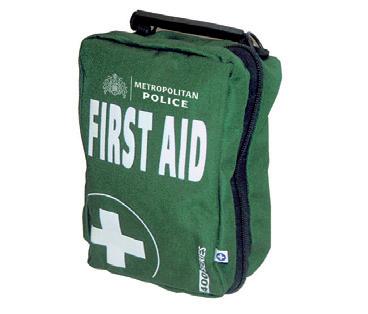
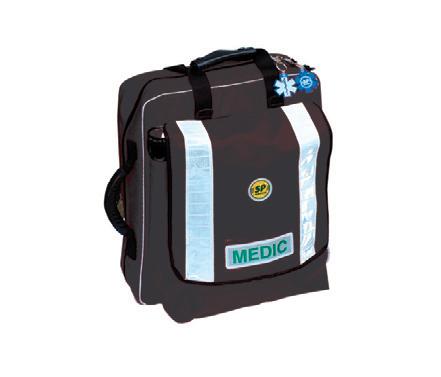



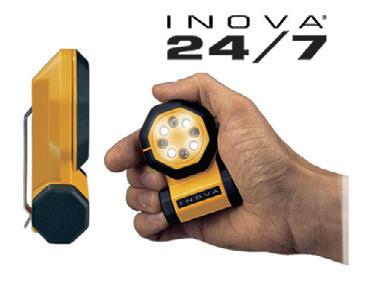

The latest security technology news 09 COUNTER TERRORISM
The National Counter Terrorism Security Office advises on how businesses can help reduce the consequences should a terrorism attack take place
15
PERIMETER SECURITY
The newly formed Perimeter Security Suppliers Association throws some light on, and raises some important questions relating to the use of the highest security perimeter products
21
In spite of the volcanic interference, BAPCO 2010 attracted leading buyers and influencers in public safety communications
29
ACPOA-APA
The APA-ACPO International Policing Exhibition 2010 is set to be a high profile event for police, police authorities and the Home Office
39
AIRPORT SECURITY
Ensuring that a high level of security is in place is a priority for any airport, writes the British Security Industry Association
43
Chris Yates discusses what’s going wrong with US counter terrorism
A|D|S looks at the UK’s high value manufacturing and services industries in aerospace, defence, security and space
51
SPOTLIGHT FOCUS ON IP TECHNOLOGY
We take a look at the latest IP technology available
59
Focusing on innovations and numerous product premieres, security essen is a leading event for security and fire prevention
65
TranSec World Expo enters its 8th year with the name change to Transport Security Expo and Conference
70
Established as the world’s largest annual security event, thousands of visitors descended on Birmingham last month for IFSEC
73
COUNTER TERROR EXPO
Record attendance at Counter Terror Expo reflects threat from terrorism remains high




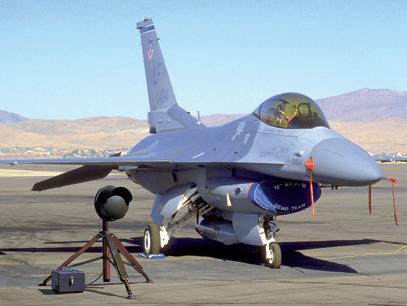


Pedigree Farm Barns, Althorp, Northamptonshire NN7 4HE
Tel 24 Hrs: 0870 7500545
Fax: 0870 7500546
email: info@watchdogs.ltd.uk www.watchdogs.ltd.uk
Company number 4429037
Vat Reg No. 784 4576 82

Watchdogs Ltd is an established and well respected security company with the expertise to provide practical solutions to your security and safety issues.
We focus greatly on the training and qualification of all dogs and handlers and believe in continuation training and assessment, ensuring high standards and quality of service to all our clients.
All dogs and handlers are fully trained and accredited with National vocational qualifications with all drugs dogs trained on ‘live’ drugs (under Home Office Licence).





• Key Holding & Alarm Response
• Locking & Unlocking Facilities
• Mobile Patrols
• Static Security Dogs & Handlers
• Drug Detection Search Dog Teams
• Explosive search Dog Teams
• Firearm & Weapons Search Dog Teams
• Static Guards
• Dog Training
• Risk Assessments
• Drugs Policy Warning
• Safety & Security Consultants & Advisors
• Close Protection
• Covert Surveillance
BORDER POLICE DISCOVERED 25 would-be illegal immigrants crammed between bottles of wine in the back of a lorry as they attempted to enter the UK. The group of men – from Afghanistan, Syria and Iran – were discovered in Dunkirk by the UK Border Agency.
The stowaways were discovered by a sniffer dog, a springer spaniel, called Louis, who detected the scent of humans and alerted his handler, while checking vehicles before they boarded ferries bound for Dover. Officers then opened the Czech lorry and found the foreign nationals – including a father and his sons, aged seven and nine – concealed among bottles of wine and olive oil. The consignment was due to be delivered to a depot in Weston-superMare. The stowaways were all handed over to the French border police and the driver of the vehicle and the haulage company now face a potential fine if they are unable to prove they took steps to secure the vehicle. Tom Dowdall, the UK Border Agency’s director for European operations, said: “This is exactly why we base so many of our staff in France and Belgium – to stop illegal immigrants before they can reach the UK.
“As well as using sniffer dogs, our staff also have heartbeat detectors and carbon dioxide probes to detect the presence of people hiding in lorries.” Throughout 2009, more than 29,000 individual attempts to cross the Channel illegally were prevented, the UK Border Agency said. Louis is one of over 100 sniffer dogs used by the UK Border Agency to protect the border and enforce the law.
WORLDWIDE MILITARY EXPENDITURE
in 2009 totalled an estimated US$1,531 billion, according to new figures released by Stockholm International Peace Research Institute (SIPRI). This represents an increase of 5.9 per cent in real terms compared to 2008 and an increase of 49 per cent since 2000.
The USA, with a real-terms increase of US$47 billion, accounted for 54 per cent of this increase. Of those countries for which data was available, 65 per cent increased their military spending in real terms in 2009. In an analysis by region, Asia and Oceania showed the fastest real-terms increase with 8.9 per cent.
“Many countries were increasing public spending generally in 2009, as a way of boosting demand to combat the recession. Although military spending wasn’t usually a major part of the economic stimulus packages, it wasn’t cut either,” explains Dr Sam Perlo-Freeman, head of the Military Expenditure Project at SIPRI. “The figures also demonstrate that for major or intermediate powers such as the USA, China, Russia, India and Brazil military spending represents a long-term strategic choice which they are willing to make even in hard economic times.”

THE EUROPEAN UNION is close to a five-year accord with Washington on financial data sharing in anti-terrorist investigations, stressing the deal will satisfy privacy concerns that led the European Parliament to void a previous draft. In response to privacy concerns in the European Parliament US authorities must delete or rectify inaccurate data and grant legal redress in American courts if data are abused, EU Interior Affairs Commissioner Cecilia Malmstrom said. The European police organisation Europol would verify if US requests for data are needed “for the fight against terrorism and its financing” before data are released, she said. The agreement would have tougher rules on transferring data to third countries and ban US lawenforcement agencies from randomly searching financial data without cause. Ms Malmstrom said: “The individual data that US is looking at has to be related to an investigation. It has to be a person suspected in an investigation on terrorism. They cannot just look around to see if they find anything interesting. So your transfers and my transfers will not be interesting for them.”
Interior minister Roberto Maroni has announced that the Italian government plans to install body scanners in all airports and train stations nationwide.
“I belive I will have them installed in all of Italy’s airports and all places where there is a risk of incidents, first of all in rail stations,” Maroni said.
Italy has been testing the full body scanners in three airports since March.
million
The Prime Minister David Cameron announced extra resources for British troops to deal with roadside bombs as he made his first visit to Afghanistan since the formation of the Coalition Government. During a joint press conference with Afghan President Hamid Karzai in the capital Kabul, the PM said an additional £67 million will be provided to troops to help them counter improvised explosive devices (IEDs).
The PM said: “My biggest duty as Prime Minister of the United Kingdom is to our armed forces and to make sure that they have all the equipment and all of the protection that they need to do the absolutely vital job that they are doing here in Afghanistan.”
Following the UK General Election last month, Pauline Neville-Jones has been appointed minister of state responsible for security and counter-terrorism.
During a 30-year career as a diplomat (1963-1996), Pauline Neville-Jones served in British missions in various locations around the world, including the former Rhodesia, Singapore, Washington and Bonn. From 1991 to 1994, she was deputy secretary to the Cabinet and head of the defence and overseas secretariat in the Cabinet Office. In 2006, she was appointed to head the Conservative party’s National and International Security Policy Group. In 2007, Pauline was appointed shadow security minister and national security adviser to David Cameron.
TG ACCESS – the world’s leading supplier of anti-terrorist vehicle barriers continues to lead the market in innovative products. The Counter Terror Expo in London provided the ideal venue to launch the SP Shallow TT rising bollard. This is the world’s first double action telescopic bollard, which allows a 1,000mm tall automatic bollard to be installed into a foundation of only 900mm. When viewed alongside our Shallow Mount static bollard range of products (requiring from only 112mm depth) and our shallow foundation Cityscape Gate (450mm foundation) it is easy to see why ATG Access has such a reputation for innovative high security products. Foundation requirements are the most common challenge when installing high security vehicle barriers. Only bollards meet the aesthetic and functional requirements of end users on many projects. The ATG SP TT Bollard will provide a welcome addition to the arsenal of high security barriers available to the security specifier. Other recent product developments from ATG Access include the successful impact test of the world’s strongest bollard; the ATG SP1200 automatic bollard. Only one of these bollards is required


to stop a 30,000kg truck at 80km per hour, another first for ATG Access. Our constant innovation and product design driven by the market has led our company to success not only in the UK on most of the UK major airports, government buildings and British Embassies worldwide but also on prestigious projects internationally. Recently our shallow
mount bollards, automatic bollards and roadblockers have been used to protect major assets in Kuala Lumpur, Singapore, the Shanghai Expo 2010, the Yas Island F1 track in Abu Dhabi, Hotels in Egypt, major new tower buildings in Germany, EU buildings in Brussels, Embassies in Europe, Middle East and Asia, UN buildings in the Middle East and many many more. Based in the North West of England, the company has grown rapidly in recent years to meet the global demand for our products. With in-house engineering, CAD, manufacturing and installation staff we are in a perfect position to help guide customers to the best vehicle barrier solution and to be able to design specific solutions to overcome any obstacles on a project. With further offices in London, France and Dubai and 20+ international distributors and agents ATG Access has the resources to ensure your requirements will be met with the best in class product and project support.
FOR MORE INFORMATION
Tel: +44 (0)8456 757574
Fax: +44 (0)8456 752255
E-mail: sales@atgaccess.com Web: www.atgaccess.com








Chris Phillips DCI, head of the National Counter Terrorism Security Office, looks at how businesses can help reduce their vulnerability to a terrorist attack
THERE IS NOTHING NEW about terrorism. Extremists have used terror for centuries to get their way. The present threat to the UK and most of the world is by Al Qaeda core, associated or affiliated groupings and of course the lone terrorist. This threat is not going to go away soon and it is very real. Terrorism as against other crimes can totally change the way we live our lives, the impact is not only dramatic but also devastating. Recent attacks on crowded places show that this attack method is currently at the top of the terrorists targeting.
The flexible and adaptable nature of terrorist groups throughout the years means, however, that we must not only look backwards at previous attacks. Those seeking to disrupt, reorder or destroy the status quo have continuously sought new and creative ways to achieve their goals. Changes in the tactics and techniques of terrorists have been significant, far better that we attempt to be ahead of the game and have thought through any new attack method so that we can put defensive measures in place before we are targeted.
At the National Counter Terrorism Security Office (NaCTSO) our role amongst other things is to reduce the vulnerability of crowded places in the UK. To effectively target harden those sites that the potential terrorist may decide to attack, thereby reducing the likelihood of an attack and reducing the consequences should an attack take place. Obviously, as a team based in London with a national remit we have had to find a means of delivering best practice advice to as many businesses as possible. To achieve this we delegate tasks to a team of Counter Terrorism Security Advisers (CTSA) who work within every police force in the UK. They are trained and tasked by NaCTSO to deliver national projects locally within police force areas. This is a very effective way of getting advice from the centre to all business wherever they are in the UK and now more and more across the world. Police and Security Services cannot be expected to do everything. It is essential that the business community understand the issue and their own vulnerability before they can even begin to protect themselves. When first alerted to the potential of a terrorist attack on them, members of the business community can shrug their shoulders and state that it is a matter for the police, fire brigade and ambulance service. Unfortunately, whilst all three emergency services will
play a major part, businesses themselves not only have a responsibility but an obligation to their staff and customers to protect themselves and to have plans in place to manage such a situation.
The good news is that business can do much to reduce their vulnerability to a terrorist attack. Some of which may involve capitol projects such as changing glazing or attaching protective film. This will have the effect of seriously reducing injury in the event of an explosion, as 9 out of 10 injuries in an explosion are caused by flying glass. It will also help to prevent the devastation of the workplace. If protection is not in place millions of glass fragments could penetrate into the building and make almost everything inside – including all computers, printers and carpets – unusable. Other reductions in vulnerability can be
the attack. Almost all the attacks outside of Iraq and Afghanistan are examples of this, including Bali where a small device was exploded inside the nightclub to move victims out into the large car bomb outside causing catastrophic loss of life.
We also know that in an urban area flying glass has caused the majority of deaths and injuries in a bomb blast. Therefore we must challenge the practice of automatic evacuation. It may be much more appropriate if a bomb attack happens in the street outside that the occupants take shelter in an already designated protected space or bomb shelter, if possible within the building (invacuation). Automatic evacuation could mean taking those who are in the relative safety of a building out into a highly dangerous environment of secondary fragmentation and falling glass and of
Business can do much to reduce their vulnerability to a terrorist attack. Some of which may involve capitol projects such as changing glazing or attaching protective film. This will have the effect of seriously reducing injury in the event of an explosion, as 9 out of 10 injuries in an explosion are caused by flying glass
attained with little or no cost. Staff awareness is provided free by NaCTSO and CTSA’s and often changes in working practice can make a huge difference. For example a clear desk policy promotes IT security. Ensuring that premises have good housekeeping systems in place mean that any search of the premises for suspicious items will be made easier. There are many other changes to working practice that make a business much more likely to survive an attack, such as business continuity plans, evacuation tests and a crisis management plan.
The current attack method is to use multiple and coordinated attacks to cause mass casualties. This in itself brings into focus what we advise the public to do in the minutes, hours and days after an attack. Taking this as an example, we know that terrorists have consistently used an attack method where they set off one explosion in order to move potential victims to a larger bomb. From the terrorists perspective this not only increases the death toll but also increases the fear value associated with
course possibly into another explosion. Of course we must be careful not to advise invacuation as the automatic response, especially if the building is on fire or in danger of collapse. In those circumstances evacuation is the obvious answer, however those in key areas within business must be aware of the potential consequences of each option so that they can make an informed decision.
So what are we at NaCTSO doing to get these messages across? Well not only do we give bespoke surveys and recommendations to major sites across the UK, we have also devised a series of training/awareness programmes for business sectors. Under the banner name of Project ARGUS we have rolled out bespoke training for shopping centres, hotels, universities and colleges, Ports, The Night Time Economy and The Health service. We have also devised a bespoke product for architects, developers, town and city managers. We have called it Project ARGUS (Professional) as it is aimed specifically at

SMi present their inaugural event:
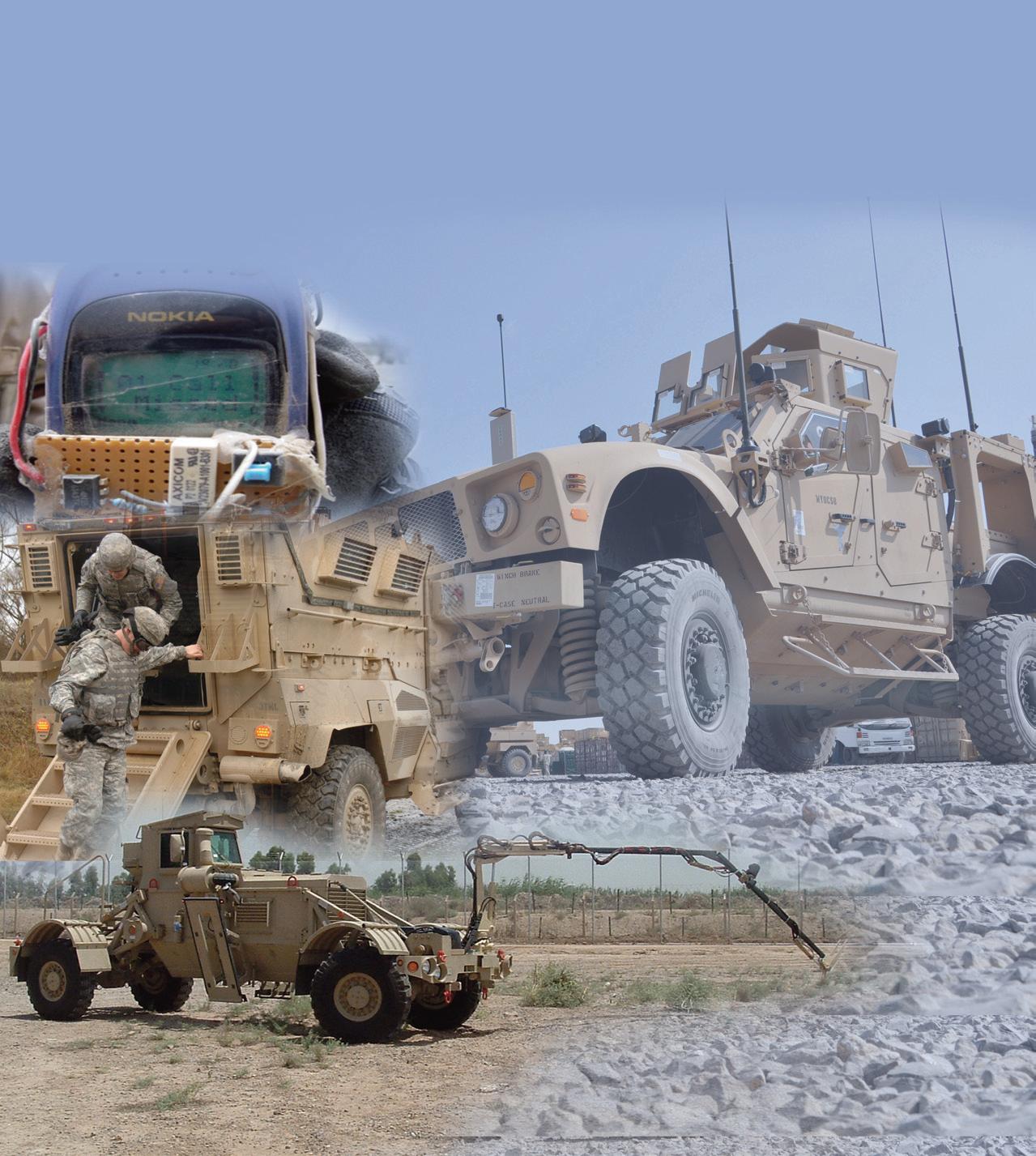
Our top speaker line-up includes:
• Colonel Michael Smith, Director, Training, Doctrine and Combat Developments, US Army Armour Centre Command Group
• Colonel Santiago San Antonio Demetrio, SP Army, Defense Staff, C-IED COE*
• Lieutenant Colonel Geof McCarthy, Section Head, CIED Projects, Land Requirements, Canadian Forces
• Lieutenant Colonel (Ret’d) Mike O’Bea, Capability Manager, Virtual Training Combined Arms Centre, TRADOC, US Army
• Major Dick Bouwhuis, Staff Officer Technology, Netherlands CIED Joint Task Force
• Major (Ret'd) Chris Hunter QGM, Counter IED Analyst, Kratos Enterprises Ltd (Former Senior IED Intelligence Analyst, British Armed Forces)
• Major Paul Beaves, SO2 Land Platform Survivability Division, DSTL
• Major Thiebaut Xavier, Doctrine and Development DirectorateFrench Engineer School, French Army
• Captain Robert Berish, Commander, EOD Flight, Eglin Air Force Base, US Air Force
• Jim Blackbur n, Assistant Capability Director, European Defence Agency
The big themes:
• Attack the network – Lessons from operations
• Training the force – Doctrinal considerations
• Defeat the device – Design elements
• Prepare the force – Training for IED preparedness
• Conquer the device – EW and countermeasures
With specific highlights covering:
• A special address on the Canadian experience in Afghanistan
• EOD and CIED operations in Iraq and Afghanistan
• The effects of IEDs on future armoured vehicle design
• Employing unmanned systems against IEDs
*Subject to final confirmation
• Building collaborative efforts to counter IEDs
• Making IED threat detection an integral part of training
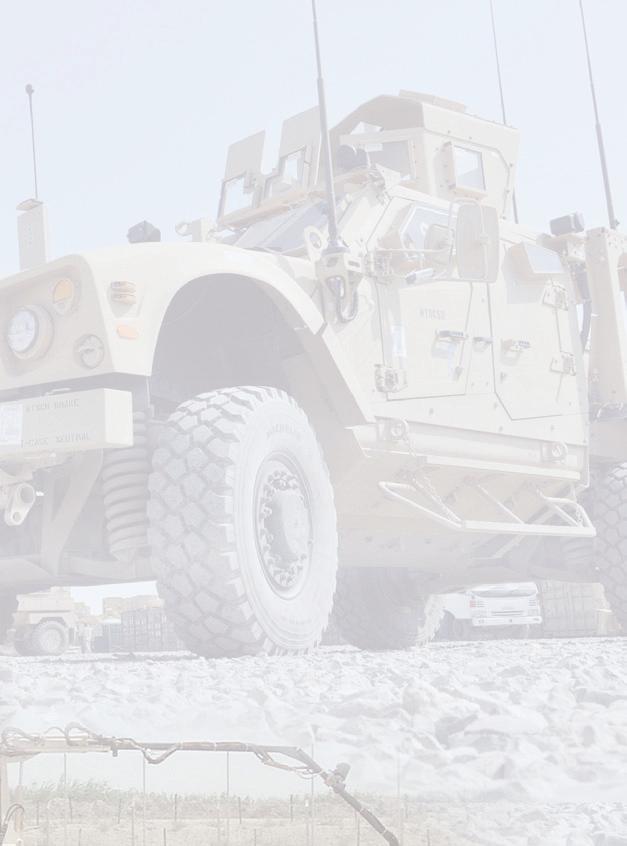
C-IED and EOD: Enhancing Support to the Warfighter through Advanced EOD and C-IED Techniques
Tuesday 5th October 2010, 12.30 – 5.00
In association with: Kratos Enterprises


professionals in the built environment. We developed this product with the help of the Royal Institute of British Architects (RIBA). It is comprised of a three-hour multi-media simulation of a terrorist attack. Examining the role architects, planners and developers can play in helping to protect communities against attack using their professional skills and knowledge. These simulations will be facilitated by CTSAs and run with RIBA support. Those who attend the course will receive CPD points through the RIBA CPD programme. This work has come about as a result of the Lord West review of the protection of crowded places from terrorist attack.
One of the key points to emerge from the review is that architects have a vital role to play in the design of the built environment and in particular, those buildings and developments that may be attractive to terrorists. But perhaps they have not had the opportunity to engage with counter-terrorism professionals and explore some the issues and ways in which they can help to keep communities safe. The simulation involves both video and audio clips looking at an attack on a imaginary building development which is also a crowded place. The attendees are taken through a series of exercises to explore the issues of building design, glazing the use of materials and the design of space. This project is designed to raise their awareness around CT issues and inform them of the latest thinking in this area. This initiative is supported by the President of RIBA, Surand Prasad and focuses on the role that architects can play in helping the protect communities from terrorist attack through the use of better design and sensitivity around the use of appropriate materials and building design. The aim of this project as well as other projects from the ARGUS family is to inform those who may be the likely targets i.e. working in a crowded place that they can do something not only when an attack has happened as well as help to prevent an attack in the first place.
Giving business the knowledge as to how terrorists reconnoitre an attack location will hopefully encourage that business to put in place good protective security measures. Good enough to either dissuade potential terrorist or help identify and catch him or her before they have the opportunity to commit mass murder. There is no doubt that the process of building CT security into our buildings and developments will take a long time to complete, however, there are many things that can be done quickly and cheaply to reduce vulnerability. Simple things like putting protective film on glazing will provide at least an improved level of protection against glass fragmentation. This will save lives if a bomb explodes nearby. Sometimes there is a very low cost to
reducing vulnerabilities. Training staff in what to do in the event of an attack, which NaCTSO and local CTSAs offer to business free of charge, has major benefits in saving life and in the longer term making sure the business survives and gets back into business as soon as possible after an attack. Remember an attack can impact on business even though they were not the intended target.
Latest off the production line in tools to assist business is the Vulnerability Self Assessment Tool (VSAT). Developed in partnership with leading businesses across the UK, it will assist owners, operators or those responsible for the security of crowded places to determine their vulnerability to terrorist attack.
Understanding that we wanted to get the counter terrorism protective security message further and wider we developed a tool whereby any business in the crowded places environment will be able to self assess their vulnerability and then be helped to understand how they can reduce
assist you in prioritising where you may need to make improvements. Following the initial launch users will be able to view a business sector base line to see how their assessments fair compared with other assessments within the UK.
The VSAT will offer a number of options for the user as a result of their completed vulnerability assessment. These may include the use of a comprehensive Business Continuity Management (BCM) template or a CTSA delivered Project ARGUS or GRIFFIN training event. Each question will provide a means for the user to seek further guidance by way of “sign posting”. The options will encourage owners/ operators to review their working and recruiting practices, risk management or site evacuation and invacuation procedures. Users will also be able to access the latest advice via the main NaCTSO website blog. The Vulnerability Self Assessment Tool will provide a means to communicate nationally with the crowded places sectors and encourage communication locally between your business and the extensive network
Giving business the knowledge as to how terrorists reconnoitre an attack location will hopefully encourage that business to put in place good protective security measures. Good enough to either dissuade potential terrorist or help identify and catch him or her before they have the opportunity to commit mass murder
them. Many of these crowded places consist of small to medium enterprises, SMEs that may not have necessarily considered themselves as at any form of risk of suffering a terrorist attack.
CTSAs will be registering users and you may receive an e-mail inviting them to complete the assessment or alternatively they can register by contacting their local CTSA. Guidance on how to register can be found on the main NaCTSO website, www. nactso.gov.uk. In the case of business with large numbers of sites then user accounts can be created centrally by NaCTSO.
Completing the vulnerability self assessment of 33 questions will take up very little time and will provide owners, operators or management with an understanding of what they need to put in place to reduce their vulnerability to terrorist attack. Furthermore, the self assessment process will signpost the owner, operator or manager to the appropriate measures to reduce their vulnerability. It will also provide a commercially sensitive report of recommendations, which will only be available to the individual user; this has been done to protect the business interest of the location. The overall assessment result will be displayed without showing numerical values but will
of Counter Terrorism Security Advisers throughout the UK. Most importantly, completing the VSAT will identify and promote reductions in your vulnerability and help protect our communities.
When the business community have been informed of the threat and the impact it could have to their people and business, and it is explained why it is important to have security measures, business continuity and response plans in place, then I have found them not only to be tremendously supportive but also very willing to deal with the issues and reduce their risks.
There is much that can be done and indeed is being done in the UK to reduce our vulnerability. By working together the private and public sections of our society can make the UK a very hostile and difficult place for terrorists to operate.

It is widely accepted that in most terrorist bomb
incidents in an urban environment, by far the largest proportion – as much as 90 per cent of the injuries or fatalities are as a result of flying glass
CCORDING to Dr John Wyatt
AMBE MIMgt MIExpE PhD, the United Nation’s blast consultant for Europe and North Africa, the British Council’s Consultant worldwide and a Member of the London Olympic Group, glass is by far and away the most likely and dangerous element to fragment from blast. “A graphic illustration of this is that in each of the City of London bombs over 500 tons of glass was swept up from the streets,” Wyatt says. “Without a doubt reducing glass fragmentation reduces the number of casualties in a bomb incident. It’s worth remembering that being predominantly liquid, our bodies are remarkably resilient to blast. You would have to be very close to the explosion to be killed or seriously injured solely from blast effects. It is generally not the blast itself that injures or kills you, but being hit by fragmentation, either primary – the bomb casing itself – or secondary – where the blast has damaged objects such as window glass – that then becomes lethal.”
WEAK MATERIAL
To some extent it is obvious that glass is the biggest problem; it is the weakest material of a building structure and therefore the most vulnerable to breakage and shattering. When it fails, as a result of an explosion, it creates thousands of razor sharp shards driven at hundreds of miles per hour. In the light of this, most counter terrorism (CT) guidelines prioritise glass protection as the first measure to be taken when protecting a building against the threat of explosion and, in many cases, the protection is mandatory. Extensive explosive effect studies have identified the blast risk to differing glazing constructions and analysed the available solutions, seeking to minimise the degree of shattering. These solutions take account of different thicknesses and types of blast resistant glazing, but of note is the significant degree of protection offered by security/blast mitigation film. Such film can significantly reduce the hazard created by flying glass and, additionally, is extremely cost-effective compared with other measures. Perhaps not surprisingly, therefore, it has become a very popular CT product. To put things in context; the greatest threat to the safety of the building occupants (from flying glass) can be reduced for less than
the cost of a few security bollards!
Of course, for new construction – or substantial refurbishment projects – the correct glazing to suitably reduce the hazard should be installed and the involvement of Police Architectural Liaison Officers is invaluable in the approval process of planning applications, especially where the potential for vulnerability to attack has been identified.
Commonly available glass types and glazing systems can reduce the level of hazard greatly, but equally a thin single pane of float glass could be vulnerable to breakage up to 150 metres away from a small car bomb.
Current Home Office guidelines recommend specifying laminated glass with a minimum polyvinylbutryal (pvb) interlayer of 1.5mm, fitted within an adequately strong framing system. Where double glazing is used, the preferred standard is still a 7.5mm laminated glass inner pane with a 6mm toughened glass outer pane, framed with deep rebates. However, actual thickness and pane size to meet a specific classification must be confirmed by the laminated glass supplier.
Toughened glass may also resist high blast pressures without damage provided it is well supported in a strong and rigid frame. Yet, if the blast is sufficient and it does eventually break, driven fragments may cause huge damage, even though the glass breaks into supposedly safe chunks. Consequently, where toughened glass is installed, it should have an anti-shatter film applied and, because under these conditions glass retention within the frame is also potentially compromised, edge retention is crucial.
Of course, where either specification has been inadequate or where economic considerations have diluted the original intent, film is regularly used to enhance protection.
When you consider that of the total building stock expected by the year 2050, 85 per cent of it is already in existence, this means that most of the glazing also already exists. Whilst most old window systems generally do not afford a level of adequate hazard protection, improvements in glazing products over the last 20 years or so have gone some way to offer either compliant protection or to reduce the risk of the glazing creating a danger to the occupants.

realities can impede the immediate and wholesale completion of the required upgrading works. Building owners must inevitably balance the statutory duty of care, available intelligence and CT advice against their budgetary constraints, but the issue cannot simply be ignored and a process of highlighting the most at-risk glazing is therefore required.
The first stage of the protection process involves completing a glazing audit to establish the current level of protection or hazard offered by the glazing, measured against the likely potential threat. As it is impossible to visually identify the multitude of glazing configurations, these surveys should be completed using electrical testing equipment that analyses the glass. This enables the glazing that already affords compliant or adequate protection to be omitted from the recommendations and identifies the glazing that is judged to be hazardous. The assessment should also take account of factors such as internal safe areas and protected evacuation routes, or change of use. For example, simply changing airport terminal buildings associated with certain flights may alter radically the threat level to the surrounding buildings and services. In the same way, the 2012 Olympics will place higher CT requirements on particular areas, since with such a predicted influx of tourists and attendees there is likely to be a plethora of newly created ‘crowded places’.
A competent glazing assessment report prioritises the remedial actions, based on many factors such as the occupancy of the area and the risk of the glazing creating a hazard. Where finances are limited this enables the protection process to be started, the risk in the highest priority areas to be reduced and the project not simply being shelved because it is deemed too expensive.
Mark Towner, government contracts manager for Durable Ltd., comments: “We have held security window film contracts with the UK Government for the past 20 years and they have been the largest user of the product because of the protection it offers for relatively low cost. What we have noticed in the last few years, however, is a change in how the protection of glazing is being viewed. Whereas 15 years ago all non-compliant glazing had a film applied

Without a doubt reducing glass fragmentation reduces the number of casualties in a bomb incident. It’s worth remembering that being predominantly liquid, our bodies are remarkably resilient to blast... it is generally not the blast itself that injures or kills you, but being hit by fragmentation
regardless of location or occupancy, there is now a desire to risk assess this protection.”
Blast mitigation film is a passive contributor to safety. It is unobtrusive, but should not be taken for granted. Whilst modern films generally carry a ten-year warranty, our recommendation is that any building with film fitted eight or more years ago should be checked to establish whether it still provides an adequate level of protection. The correct specification of film to glass is the start point. Standard polyester film, such as 3M™ Safety & Security Films Safety S70 (175 micron) is the minimum Home Office recommendation, with more robust film applied to larger panes.
The unique ability of the premium grade 3M™ Ultra Films to resist blast pressure lies in their patented multi-layered construction and their increased ability to absorb energy is due to a considerably higher
stretch factor than standard polyester constructions. It is this combination of tensile strength, elongation, break strength and anti-tear/puncture propagation that makes 3M Ultra Films the ultimate blast mitigation product. Remember, air-blast is not the only consideration; debris will inevitably be driven on the blast wave. It is also worth pointing out that it is easier, quicker and more cost effective to clean up glass held together by the film in the event of an incident. According to newly revised Glass & Glazing Federation guidelines, the use of a certified edge retention system may be used to mechanically affix films to the frame, such that the protection is enhanced and the hazard level minimised. This is especially true where broken glass may otherwise be propelled out of the framing structure. The combination

of both the film and edge retention system should carry the relevant levels of certification for use in blast protection.
As world leaders in the manufacture of window films, including blast mitigation film, 3M’s experience goes back to the 1960’s when the company developed products to meet the terrorist threat in Northern Ireland.
3M works alongside independent, specialised installation partners to provide the most effective enhanced protection to glazing. My role, as national sales executive responsible for 3M Window Film business in the UK, necessitates close liaison between our partners, involved CTSA’s and those responsible for the technical delivery of the product to the client. Given the significance of the forthcoming London Olympics, I anticipate that our involvement will escalate rapidly over the coming months. Many embassies and overseas missions also rely on 3M Safety & Security films. That sector of 3M’s business is managed by my colleague Dave Cox, who currently holds the presidency of the European Window Film Association. Finally, it is worth pointing out that where the security budget is squeezed, combined solar/blast protection films may realise energy savings with a potentially short payback with the added benefit of making buildings more comfortable to work in during hot weather. Thus, much of the total security cost can be borne from a shared purse and carbon footprint targets can also be addressed.
Contact: Scott McLachlan Mobile: 07836 557 199
E-mail: smclachlan@mmm.com
Customer Information Team: 0870 536 0036 or visit www.3mconstruction.co.uk
Laurence Goode, chairman of the newly formed Perimeter Security Suppliers Association throws some light on, and raises some important questions relating to the use of the highest security perimeter products
WHERE SECURITY RISKS are the greatest, and hence the very highest security rated perimeter products are required, you could be forgiven for expecting that these not in-expensive products have been tested to, and to meet the very highest specifications. You might expect this, but also might be surprised to find that worldwide currently there is simply no way to ensure that this is the case. However, things are changing.
Take the case of Hostile Vehicle Mitigation (HVM) products. These are designed to arrest the progress of a hostile vehicle e.g. terrorist car bomb or truck, at the perimeter of a sensitive site so that the damage it can cause is limited. There are some very good products available, and many have been properly designed, and indeed tested to recognised standards. These include high impact vehicle blockers, gates and bollards, and also a number of both fixed and rapidly deployable street furniture products.
This may sound pretty cut and dried; however, there are a number of issues that complicate this.
The first is that even products properly tested to these standards do not appear on any published, generally available list. Unless final users have access to government (often classified) lists it can be difficult for users and designers to verify a manufacturer’s claims. This is a particular issue for manufacturers in this very specialist field where export sales are necessary to provide the volumes to justify the high costs of design and development. Another issue is that users may not be properly aware of the whole standards and testing regime. The difference between claiming a product is ‘tested’, and ‘designed to meet’ a specific standard, can be blurred by manufacturers intent on getting product specified or sold into a project, and again, the problems are multiplied where manufacturers and projects cross national boundaries. These issues of course combine and
There are some very good products available, and many have been properly designed, and indeed tested to recognised standards
Among these are some very innovative designs, and without doubt many of these are extremely effective and have been proven to work exactly as designed.
For a number of complex reasons, however, identifying which products have actually been properly tested can be extremely difficult, and of course the difference between properly tested or not, could be the difference between life and death. There are recognised standards for HVM products (PAS 68 in the UK, and DOS SD-STD-02.01 in the USA for instance) and these specify precise test criteria such as vehicle speeds and masses that must be resisted. Tests generally take the form of specific vehicle types being ‘driven’ by a highly calibrated mechanical system into the test product. This takes place under very precisely controlled conditions. Very high resolution video and data recordings allow detailed analysis so that just how well the impact standards were met can be proven without doubt.
reinforce each other to leave the door open for manufacturer’s claims that could be exaggerated or worse, completely false. However, even beyond this there are two other major issues that buyers have to be aware of.
The first of these is that while a lot of HVM product is indeed tested to a specific impact standard, there are currently no standards specifically for HVM product that covers things like reliability, longevity, or serviceability. There are of course a multitude of standards available that cover these areas, with some (HVM) manufacturers even developing some of their own, but this at present little conformity and this can lead to a wide range of quality of product. Of course impact (i.e. security) rating means very little if after a year a product has simply stopped working due to reliability issues. And a much worse scenario is that the product still works but due to poor corrosion resistance can no longer offer the original impact rating. Many

(but not all) Impact rated products of course are installed largely below ground and in this case this particular problem is exacerbated since corrosion is both much more likely, and worse, can remain hidden and unknown for a long time. A further issue relates to the range of sizes of product that can be validated by a specific impact test. In order for a manufacturer to offer a range of sizes of a particular product, for instance a vehicle blocker in different widths or different heights, currently means a separate test is needed for each size. This is expensive for manufacturers (impact testing is not cheap!) and therefore product becomes expensive for users. It is of course possible to design a single test to cover a range of products sizes, however, this needs an agreed discipline to mathematically/ statistically relate different size products to one test, and of course an independent and widely recognised body to verify the validity of this process. This body needs both engineering skill and a strong history of experience in this field. Of course you would struggle to achieve higher credibility than by accreditation by a National Accreditation Service such as the UK’s UKAS.
Lastly, and the issue that overshadows all the others, is that even if a product has been through a genuine testing regime and passed, and even assuming this is verifiable, there has until only just recently been no way to guarantee that the product you buy today, is actually the same as the product that was originally tested. To provide this guarantee requires a certification scheme which starts by capturing all details relating to a product’s design, construction, materials, installation, and testing, and provides an auditable process which links a current product back to all this detail. This is necessary since details can change, both consciously and unintentionally through the life of a product. For instance




good manufacturers constantly engage in development programmes, and their component suppliers (or even the component supplier’s material suppliers down the chain) could make specification changes over time. Changes are also frequently made on the basis of feedback from the installation process. Ideas for improvement often only occur at the installation stage, instigated by the need to take account of specific local site conditions. All these changes may well have been made individually in the interests of improvement, however without a proper certification scheme to capture all changes and evaluate their effect, even fairly minor changes could radically alter the product’s performance and invalidate any testing or impact rating.
The solution to all these issues is to have a widely accepted certification scheme, both for products, and the companies that design, manufacture, install and service them, run by an independent, credible, certification organisation, and using a set of appropriate standards that have been agreed across the whole industry. Until recently there was no machinery to achieve this, and this became one of the fundamental reasons for the formation of the Perimeter Security Suppliers Association (PSSA).
The PSSA was set up as a company limited by guarantee, funded and organised by 13 founder members who brought in
professional association administration, and started the work to gain agreement on a certification scheme and new standards. The PSSA have the backing of government departments, test houses, manufacturers and installers, as well as designers and architects already. New members are also now adding real momentum.
A partnering arrangement with LPCB (BRE), one of the leading independent UKAS accredited certifying bodies, has already produced a draft certification scheme and in conjunction with some of the industry’s leading advisors work has begun on the applicable standards to be adopted. It has been agreed that these will be incorporated into an LPCB ‘LPS’ (Loss Protection Standard), with companies and products successfully certified against this standard being listed by LPCB in their famous and widely accepted ‘Red Book’. The certification scheme will be open to all worldwide, with PSSA membership aiming to drastically ease the process by providing technical guidance, help with certification preparation, and training; all focused keenly on member needs. While the focus is currently on HVM products and an appropriate Certification Scheme, this will undoubtedly widen to cover all highest security perimeter products. The area of high security fencing is already being considered for inclusion into the same certification process. The consequences of poor standards are magnified in proportion to the level of
threat and the required security rating of product. The PSSA’s strength is the ability to bring all industry players together, gain consensus on direction with the widest agreement, and hence really start to address these overall standards. The PSSA will also provide a conduit into the standards development process, give a voice to the industry, and be able to link the interests of all involved to the benefit of the UK’s high security perimeter sector. The current issues outlined here, are not untypical for any developing industry sector, and do not by any means mean that current high security perimeter equipment is ineffective. However, with the encouragement and assistance so far added to the PSSA’s efforts from all quarters, there is no reason all the issues should not be surmounted before too long and we would urge support for these endeavours.
In the meantime of course, with the commitment PSSA membership has made to improving the whole industry standards, if you have a requirement for the highest security perimeter equipment and have any concerns about standards, you won’t do better than to contact a PSSA member.
Address: PSSA, Airport House, Purley Way, Croydon, Surrey CR0 0XZ. Tel: 020 8253 4509
E-mail: admin@psssasecurity.org Web: www.pssasecurity.org
SECUREGUARD IS A HIGH containment steel barrier designed and developed to meet PAS 68 criteria (7,500kg vehicle, 90 degree impact angle, 20, 30 and 50 mph) for perimeter security. SecureGuard systems offer protection against vehicle and pedestrian intrusion into high security areas. In the 1990s, manufacturer and supplier of specialist road safety products, Highway Care designed and developed BarrierGuard, a steel safety barrier (vehicle restraint system). BarrierGuard proved to offer significant benefits compared with Temporary Vertical Concrete Barrier that was predominantly used on highways to protect road workers. BarrierGuard’s potential was recognised early on as a product that had sufficient capacity to offer very high containment and flexibility of installation in areas where vehicular and/ or pedestrian intrusion would present a considerable risk to national and private critical infrastructure. Testing was carried out to PAS 68 criteria. Anchored only at either end of the run, BarrierGuard successfully redirected a 7,500kg impacting vehicle at 30mph from a 45 degree angle of approach;
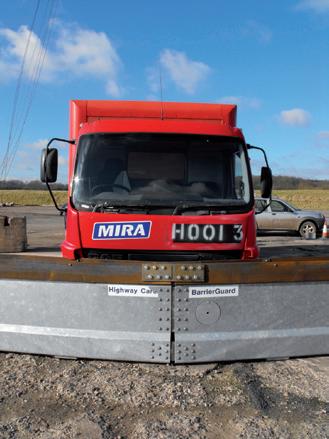
the protection level offered by the system. SecureGuard was tested to 30 mph with a 7,500 kg vehicle (impact angle of 90 degrees) with the barrier successfully preventing vehicle penetration. SecureGuard was further subjected to an impact with a 7,500kg vehicle, 90 degrees at 50 mph, meeting the criteria of this test. There was no vehicle penetration and SecureGuard did not deflect from its original position. SecureGuard offers performance characteristics that allow it to withstand localised multiple impacts. The universal SecureGuard systems meet the
requirements of PAS 68 from 20 mph through to 50 mph, while providing crash friendly performance to errant road users travelling on perimeter roads. Should the security system need to be placed next to a highway, SecureGuard offers significant protection to infrastructure whilst not endangering the motoring public. SecureGuard stops vehicles attempting to penetrate high security areas while safely redirecting errant vehicles during nuisance impacts. SecureGuard offers ease of installation with shallow foundations for permanent installations and includes options for temporary installations. SecureGuard has been installed on a number of UK sites, where complex layouts and precise time scales have been accommodated. Providing flexibility and customer confidence for a high performance product, SecureGuard is a first choice for perimeter security in this high profile industry.
FOR MORE INFORMATION
Tel: 01622 734215
Fax: 01622 735106
E-mail: liz.talbot@highwaycare.co.uk
Web: www.highwaycare.co.uk

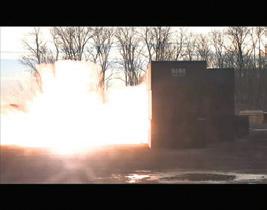
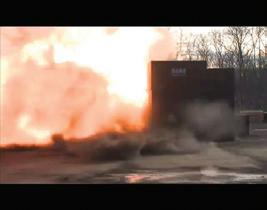


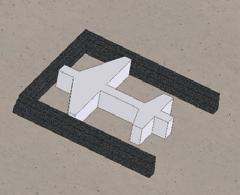



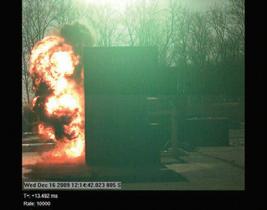
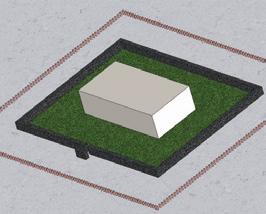


and check point
scrap tires to


blast absorption barriers for use in
Scrap tires are one of the world’s largest environmental problems Hundreds of millions of tires are produced each year increasing the total number of tires worldwide Most current applications for scrap tires involve burning or burying tires These options can have a large environmental impact.
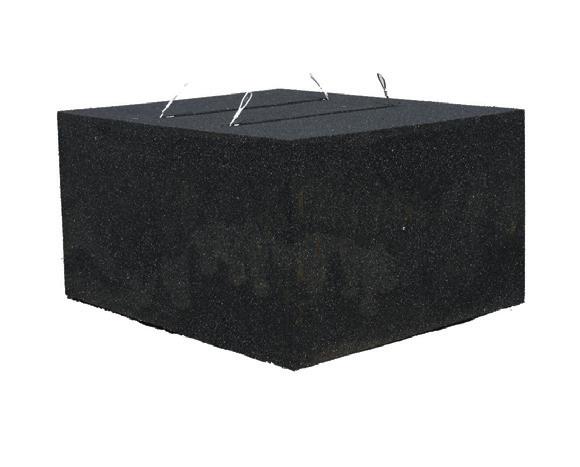







IT COULD BE SAID THAT the timing of BAPCO 2010 could not have been worse in terms of the travel restrictions placed on the UK as a result of the Icelandic volcanic eruption. However, BAPCO 2010 saw leading decision makers and influencers attend from all aspects of public safety communications including members of local and central government, the emergency services, fire authorities, MOD, British Army, Department of Health and the Police, to meet with suppliers and source new solutions.
Unsurprisingly, the majority of visitors were from the South East of England and London, but many delegates and exhibition visitors attended from the North of England and Scotland, with some dedicated international delegates making the journey from Europe to BAPCO by car!
EXHIBITION
The exhibition saw over 100 leading specialists showcase current and future communications and information management systems and engage in a flurry of business, order-writing and networking with visitors and delegates. Once again, the Opening Dinner at The Brewery on Tuesday 20 April provided delegates and suppliers with an excellent opportunity to make contact prior to the first day of the exhibition. Guest speaker
about quality and building relationships. It’s always a great show for us. We matched last year’s achievements in spite of the travel issues (volcanic ash!), and furthered key client relationships that really matter for our business.”
Other exhibitors also confirmed their success at the event, Karen Lillywhite from Red Box Recorders proclaimed the event as their “most successful BAPCO ever!” and David White from Sungard gave his thanks to the organising team: “Thank you again for another brilliantly executed and administered BAPCO.”
CyberTech International once again exhibited its latest voice recording offerings to the emergency service operators and other key industry organisations at BAPCO.
CyberTech International is a recognised provider of innovative and mission critical multi-media recording and assessment solutions for the government, industry, transport and utilities markets around the world. The offering of CyberTech encompasses recording solutions for TETRA networks, dispatch and emergency call taking centres. In addition, fixed and wireless Ambient Recording solutions have been developed around the specific needs of emergency services teams responding to major incidents. CyberTech is constantly developing
technology partnerships with key TETRA, command & control room and PBX suppliers, to provide fully integrated and certified solutions. The comprehensive offering of CyberTech is completed by effective products for the evaluation of call handling by agents as well as for the gathering and analysis of customer feedback and speech analytics.
Otto van Linden, the managing director of the Government, Industry, Transport & Utilities markets Business Unit of CyberTech, pointed out: “Our solutions are constantly developed as a real answer to the ever changing requirements of the emergency services. In the UK alone CyberTech has thousands of recording channels already implemented, with more than 35 per cent of the UK’s Police Forces and over 80 per cent of all Ambulance Service Trusts using the systems around the clock”.
PageOne Communications showcased its exclusive MTPAS (Mobile Telecommunication Privileged Access Scheme) enabled 2-way pagers for Category 1 and 2 responders.
MTPAS is a cabinet-office run scheme, which ensures that in the event of a major incident, Category 1 and 2 responders are given privileged access to the mobile phone networks. As the 2-way pager can utilise the GSM network to send back vital information
The exhibition saw over 100 leading specialists showcase current and future communications and information management systems and engage in a flurry of business, order-writing and networking with visitors and delegates


on the status and location of responders, the Cabinet Office chose for the first time to include 2-way paging within the scheme, recognising that the 2-way pager plays a vital part in the communications strategies of blue-light organisations.
As an MTPAS Service Provider under the scheme, PageOne will install a privileged access SIM (Subscriber Identity Module) card in the 2-way pager device for any Category 1 or 2 organisation. These privileged access SIMs will be automatically included in PageOne 2-way pagers for all users within the responder community, but are not available to members of the public.
As PageOne’s 2-way pagers use the company’s independent wide area paging network they provide reliable 2-way communication with the added benefits of auto acknowledgement, location of pager and response messages returned over either GPRS or GSM. The pagers also include a GPS chip that supplies the control centre with the last known location of the pager together with a reply message, supplying superior intelligence regarding the location of staff and enabling the more efficient deployment of staff throughout a major incident.
The addition of a new SOS option within the 2-way pager, means that the pager user can now also trigger a silent or audible alert. Ideal for lone workers in remote locations, when an emergency alert is triggered, the geographical coordinates are also transmitted and can
be displayed on a map in the operations control centre. The 2-way pager also comes with a remote tracking function that controlled remotely, generates location information, at regular intervals.
PageOne messaging consultants were available to discuss this new development and gave a ‘2-way paging and MTPAS’ seminar where attendees could learn more about the capabilities of the 2-way pager and its deployment in real life applications.
Visitors to the PageOne stand were also able to have a demonstration of PageOne’s flare suite of business continuity products and register free for pulse, PageOne’s priority paging channel, which is available to PageOne’s paging customers who operate blue-light emergency applications.
“Our commitment to putting our customers at the heart of everything we do drives our product innovation and service developments,” commented Clair Cawley, marketing director, PageOne Communications. “BAPCO presented us with a great platform to showcase the new developments of our public sector products, which can greatly assist public safety communications officers in their day to day roles.
TETRAtab were present at the stand of CFocus with their new range of TETRA enabled devices including real pocket PC, ultra compact sized in-vehicle PC, netbooks, and laptops.
For more flexibility and ready to use TETRAtab Ltd also introduced the TETRAtab USB modem and the first touch screen
desktop PC with integrated TETRA modem for rapid deployment of mobile control rooms. Furthermore, TETRAtab Ltd now offers integration services to TETRA enable standard equipment already in use including recycling services for the TETRA modem when those devices are being replaced by newer versions.
The conference provided stimulating debate amongst delegates and speakers and saw the last minute addition of Colonel Bob Stewart, DSO, as a keynote speaker, who presented on ‘Crisis Management and the media’ and looked at how commanding emergency services professionals can deal with the media in emergency situations. Presentations from this year’s conference programme are available to download from www.bapco.co.uk.
Event director Lucy McPhail commented: “This is a unique event in that it brings together professionals from across all the emergency services and related agencies to see and test new technologies, and there is also a huge amount of business done between suppliers on the exhibition floor.” The event also delivered an increase in the number of technology buyers and specifiers from across the civil contingency sector.
BAPCO 2011 Conference and Exhibition will take place 12-14 April at the Business Design Centre, Islington, London.
6 ARE LEADING SPECIALISTS in the provision of communications solutions to frontline organisations working in the fight against global terrorism. Our clients work in some of the most hostile and challenging environments in the world, and we are frequently there right alongside them. Our capabilities are extensive from the supply of simple analogue and digital two-way radio communications systems, right up to the specification, design and implementation of multiplatform, fully integrated voice, data & video networks across multiple and diverse geographic locations.
Our range of deployable and covert solutions are specifically designed and built in-house, for specialist operations such as surveillance tasks and response to rapid onset emergencies and allow teams to deploy on operations at very short notice, secure in the knowledge that their communications will work; first time, every time.
Each of our solutions is scalable and can be tailored to your specific requirements. Our extensive knowledge

and understanding of the newly emerging digital radio products positions as your logical first point of contact if you are looking to really get the most form a private mobile radio network.
Working extensively with surveillance and covert operators, we have a unique knowledge of the challenges of this type of operation and our understanding often enables us to make suggestions that our clients may not have considered for themselves. In this way we can enhance both the operational effectiveness and maximise value for money.
Our offices, situated in a discreet location in the Gloucestershire countryside, include full electronic and mechanical workshops. Here we provide both technical and operator training in a variety of disciplines. Our vehicle workshop enables us to fit
vehicles with a range of covert systems for both voice and video surveillance. We also design and build command & control (C2) vehicles incorporating broadband satellite terminals giving unrivalled communications connectivity regardless of your geographic location. Like everything else in our portfolio, flexibility is the key and these can be built into any type of vehicle and can be fitted with your own communications suite specific to your organisation; nothing is set in stone. Analogue or digital; voice, data or video; clear or encrypted; covert or conventional; static or mobile; simple or complex: whatever your requirements, trust us to work with you to ensure that you get the right solution, regardless of the situation. Our fully security cleared team is waiting to speak to you so please, call or email with no obligation, and learn for yourself what we can do to help you.
FOR MORE INFORMATION
Tel: 01454 610050
Fax: 0870 7622167
E-mail: andrew@g6-global.com
Web: www.g6-global.com
TERRAFIX IS A MAJOR supplier of mobile data systems to the police, security, emergency services and the Ministry of Defence. The company policy dictates and understands the importance and mission-critical nature of the systems it delivers, particularly as failure may result in loss of life, harm, or injury to the operators using the systems. These human factors are paramount to any Terrafix system and we take every opportunity to listen to all customers in an effort to provide functional improvements throughout the system’s operational life.
Terrafix is an experienced solution provider with extensive expertise in systems integration, design, manufacture and support, with the complete capability to integrate to, and work with, all communications, command and control and mobile intelligence systems. This experience enables Terrafix to bring to bear a wide variety of technologies and techniques to deliver a system solution. With a vast range of products supplied to all areas of emergency and security services, Terrafix have the unique opportunity to be in a position to integrate all of the systems together giving an overall inter-compatibility of

all services responding to an incident. Using flexible interface protocols, Terrafix systems can utilise a wide range of communication bearers, such as HSDPA, 3G, EDGE, GPRS, GSM, TETRA, Paknet, PMR, Iridium and Inmarsat C/D+. A wide variety of products and solutions can be supplied, which cater for the increasing need to supply remote data services to operators wherever they may be. One size fits all is not the correct approach for many mission-critical situations, and Terrafix will, as is frequently the case, engineer a bespoke solution using the best technology and practices
available, with the flexibility to utilise COTS equipment alongside bespoke developments to deliver an exact match to the customers’ specification. With its variety of specialist system experts, Terrafix has, and will continue to deliver successfully integrated solutions to meet the ever growing demands of the modern mission-critical customer.
FOR MORE INFORMATION
Tel: 01782 577015
Fax: 01782 835667
E-mail: enquiries@terrafix.co.uk
Web: www.terrafix.co.uk






FFECTIVE, RELIABLE and secure communication has been the backbone of law enforcement and crime prevention for centuries. As a leader in mobile telecommunication, Research In Motion has developed the BlackBerry® Enterprise Solution to meet these needs that are common in both public and private sector organisations. Designed with strict data security requirements in mind, the platform is approved by numerous independent testing bodies and is used by government bodies around the world including those in the United States and the United Kingdom. As such, the BlackBerry® solution is known as the gold standard for secure data communication with mobile personnel. Global distributor and BlackBerry Alliance Partner, Z-Three is working closely with Research In Motion to further tailor the use of BlackBerry smartphones for security conscious customers.
Z-Three’s solutions address common customer requirements around data security, device protection, secure data input & output via large keyboard and screen, power supply, asset protection via Bluetooth® as well as secure hands-free calling while driving a vehicle.
A lost or stolen BlackBerry® smartphone may give an unauthorised user access to highly sensitive information if left unlocked without a password. The short time it takes between realising the absence of a BlackBerry smartphone to executing a remote data wipe could be sufficient for someone with criminal intent to access or forward data stored on it.
The compact size of BlackBerry smartphone is one of its strengths – but there are situations where a larger screen and keyboard is required, for example, Police forces often need a more convenient solution to securely display images or submitting reports via BlackBerry smartphones when in the field.
Combining a BlackBerry smartphone with a REDFLY terminal provides a secure solution to enter data via a full QWERTY keyboard and an 8-inch display. The absence of an independent operating system or any user-accessible memory makes the REDFLY a “dumb terminal” which requires little maintenance and is ready within seconds of
HANDS-FREE SOLUTION FOR VEHICLES
Secure, high-quality voice communication with the driver of a vehicle is often mission-critical. Funkwerk Dabendorf, the leading vehicle communication provider based in Germany, is now offering its award-winning Audio2000 wired car kit for select BlackBerry smartphone models. Over the past 10 years, this solution has been installed in over 400,000 vehicles, including several fleets of European police forces. The Audio2000 enhances the reception via the vehicle’s outside aerial and charges a BlackBerry device while placed in the cradle. It further offers a separate microphone and is fully integrated into the car’s speaker system.

The BlackBerry® Smart Card Reader communicates wirelessly with Bluetooth enabled BlackBerry smartphones using a FIPS 140-2 validated AES-256 encryption on the transport layer, creating a secure, two-factor authenticated environment for granting access to BlackBerry and PKI applications.
After pairing a BlackBerry smartphone with the BlackBerry Smart Card Reader with a valid smart card inserted, the device will lock automatically when outside of Bluetooth range. The BlackBerry Smart Card Reader is slim and lightweight and offers a long battery life, which makes it a preferred solution for protecting sensitive data available to key mobile personnel.
turning it on. All data continues to be stored on the BlackBerry device, which also serves as a secure port for communicating data.
OtterBox cases protect a BlackBerry smartphone from accidental damage, while keeping it fully operational at all times. OtterBox offers three different product groups, ranging from a re-enforced silicone skin to a sleek combination of a polycarbonate shell combined with an outer silicone sleeve for optimal protection of a BlackBerry device, including against dust and splash water. Providing physical protection of an increasingly important access point to time critical information allows for a broader deployment of the BlackBerry solution’s advanced technology while keeping replacement costs down.
Losing battery power is the most common cause for putting a BlackBerry smartphone out of use. A range of authentic accessories are available to ensure multiple charging options to achieve optimal results for both charging levels and battery life protection. Authentic BlackBerry solutions are available for cars, trucks, boats as well as to charge a spare battery or to preserve power when in a carrying case.
Keeping track of assets or people while on the go is made possible with Blue WatchDog. It’s a simple, but cleverly designed device which sounds a fierce alarm and notifies a paired BlackBerry smartphone once out of Bluetooth reach. Small and lightweight, it fits into any bag or can be worn by a person who needs to stay within a predefined distance from a BlackBerry user.
Tel: +44 207 384 8700
E-mail: info@z-three.com
Web: www.z-three.com



camera’ Surveillance System, enables wireless video and other communications devices to be installed speedily at height around any incident, providing enhanced command information system support for counter terror forces.
Everyone knows that video at height gives commanders a major advantage when monitoring any kind of emergency operation. With Sherpa, a network of PTZ (Pan, Tilt, Zoom) video surveillance cameras and other wireless communications infrastructure (TETRA, GSM, WiFi and 3G), can be rapidly deployed and relay real time information back to command vehicles and portable viewing and control devices. Imagery can then be combined with other incident information to create and share a secure Common Operational Picture – using Excelerate’s satellite solution – between any authorised location.
The Sherpa Surveillance System is a new addition to the range of command information system support technologies for military, security and emergency commanders. As C4I systems evolve to include a growing number of live data technologies designed to improve
key elements – 1. The Delivery Unit, which is a self powered system that climbs to the required height and securely and automatically clamps 2. The Operating Platform Unit to a pole or lamppost. Once the Operating Platform Unit has been clamped to the pole (the entire process of attaching to the pole and positioning takes about five minutes), the Delivery Unit can then be quickly brought back down the pole and used to position additional Operating Platforms Units on different poles, thereby enabling commanders to establish a real time video or other communications infrastructure network in a very short period of time.
The Operating Platform Unit can carry robust wireless PTZ (Pan, Tilt, Zoom) cameras or other communications technologies such as aerials for TETRA or GSM, Wi-Fi access points and 3G routers. One of the system’s strengths is its flexibility to carry a growing array of devices. A long duration (up to 48 hours) battery power supply is included in each Operating Platform unit. The delivery unit is controlled by a wired handheld device. Integrated with COFDM transmission technology or other wireless systems, remote viewing of video from the Sherpa
the Control and Viewing Unit, which can be
By delivering video camera footage from cameras placed at height for improved coverage and access (with coverage achieved in a very rapid period of time), along with other imagery from rapid deployable, body-worn and vehiclemounted cameras and ‘heli-tele’ downlinks, commanders are able to see substantial improvements in the quality and timeliness of the information on which they base their decisions, especially in areas where no existing video or CCTV coverage is available. Given all these features, the system has been described as the world’s first rapidly deployable, high-level wireless camera network and communications system. The system has a wide variety of police, homeland security, military, para-military, counter terror and joint civil/military emergency management applications, including prison surveillance. The Sherpa system is already in use throughout the UK, North America, Canada, Australia and South Africa.
FOR MORE INFORMATION
Tel: +44 (0)845 65 85 747
E-mail: nicolas@excelerate.info
Web: www.excelerate.info

GemaTech’s New Portable Recovery Unit
“The PRU” can be deployed within four hours of us being alerted to your organisation’s loss of incoming calls - no matter where your business is located in the UK. And the best part for subscribers? If you don’t use it - you don’t pay anything else!
Think of it like insurance.
In return for a yearly subscription we will deploy “PRUs” in strategic locations around the UK and guarantee to have a “PRU” installed and activated in your serving carrier’s exchange within four hours of your request to invoke, following the loss of your incoming calls.
You’re in control too, because all your DDI call plans can be managed by GemaTech with the invitation to update your call re-routing plans on a monthly basis, and that’s to ALL individual DDIs re-routing to any number of alternative numbers and devices.
Nobody knows when Pandora will open her box next and what devastation will be unleashed. But can you afford not to look into ours?
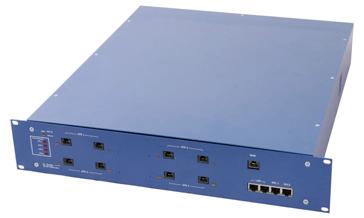


THE APA-ACPO International Policing Exhibition 2010 is set to be the most high profile event for police, police authorities and the Home Office following the General Election. To help meet the new political agenda for policing, over 100 leading suppliers to the policing and security sectors will showcase their latest technology and services in the areas of surveillance, protecting the public, counter terror, domestic extremism, public order, serious organised crime, police transport and much more!
Organised on behalf of the APA and ACPO in association with the Home Office, this leading event takes place from 30th June - 1st July at Manchester Central and is free to attend for all police authorities, police officers, police staff, associates and colleagues.
The exhibition features a variety of educational workshops, presentations and case studies from organisations currently engaged in groundbreaking projects with police forces and authorities. Organisations involved in compiling the programme include the National Policing Improvement Agency (NPIA), ISIS, Greater Manchester Police and the Olympic & Paralympics Policing Coordination (OPC) Team.
The extensive two-day knowledgebuilding programme provides keylearning opportunities for visitors in a wide range of areas including:
• Forensics
• E-services, online engagement
• Gateway Hub
• Leadership and Management Training
• Law Enforcement
• Crime Reduction against Gangs and Guns
• Mobile technology and MultiAgency interoperability
• Olympics and Police Procurement
• Community Safety and Public Security
• IT and Communications
A key focus of the seminar programme is on forensics with The National Policing Improvement Agency (NPIA) running a full morning of educational seminars on their Forensics21 Programme - transforming the delivery of forensics fit for the 21st Century. The Forensics21 programme aims to support the policing vision of a safer society by transforming the delivery of forensics, and these educational seminars will update visitors on the progress to date of a number projects within the programme, including Accelerated DNA Profiling Technology (ADAPT), Detainee At Police Station Sampling (DAPSS), National Footwear Database and Citizen Focus.
Also taking place, Dr Simon Bennett from Forensic Science Service will present his view of today’s changing forensic marketplace and how to stay at the cutting edge of forensic science in the seminar ‘The Forensic Market Challenge - In It Together’.
IT and Communications efficiency will be another key focus of the programme. Bruce Everest, senior solutions architect at Vodafone, is presenting on ‘cutting through the complexity’ of multiple platforms using ‘unified communications’ to deliver organisational agility, reduce communication costs and simplify operations. ISIS programme director Nick Deyes, is giving an insight into the Information Systems Improvement Strategy plans for 201011 and Steve Littlejohn from the NPIA is offering Chief Officers and Police Authorities
support in using the OGC Gateway Review Process which can help scrutinise projects and assure they are on track to deliver. Other seminars include leadership and management training from LSN, sessions on procurement from the North West Portal and the Olympic & Paralympic Coordination team as well as an insight into Greater Manchester Police’s response to gangs and guns. To see the full programme and seminar timings visit www.apa-acpo.co.uk.
Alongside the free knowledge-building programme, the latest policing equipment and technology will be displayed from over 100 exhibitors in everything from command and control systems, special operations, surveillance and drug detection to forensics, protective clothing and career training. Exhibitors in the defence and security sector will be displaying the latest technology and services for the counter terrorism community. These include defence organisations such as the Home Office Scientific Development Branch (HOSDB), the UK’s AeroSpace, Defence and Security trade (ADS), the Defence Manufacturers Association (DMA) and the Society of British Aerospace Companies (SBAC).
ACPO’s National Coordinator for Domestic Extremism, which aims to reduce the threat, criminality and disorder from domestic extremism in the UK, will also be at the Policing Exhibition. Since extremists don’t work within force boundaries, three units –NETCU, NPOIU and NDET – provide guidance as well as intelligence and enforcement support to forces across England and Wales. Find out more on stand E2 at the show.
The layout of the exhibition will be split into the dedicated zones; IT Communications, Special Operations and Security, to allow visitors to more easily navigate the full spectrum of products and technology on display. In addition to the defence and security zones, there will be a live demonstration area and a cyber café sponsored by Startraq.
In the demonstration area, live training will be taking place throughout the two days of the show. Greater Manchester Police will be running demonstrations on drug detection and hand to hand combat, MW Power will have a display of aerial surveillance and Public Safety Cycling will be offering cycle trials to visitors on a cycle cone course.
As all forces continue to manage the conflicting demands of budget control against continued demand for improved performance and delivery following the General Election, this is a must-attend event for all levels of police to discover costeffective solutions in every field of operation.
To see the full seminar programme, exhibitor list and pre-register for a FREE visitor badge visit www.apa-acpo.co.uk. Seminars will be open to all delegates and visitors and are sponsored by Forensic Science Services.



















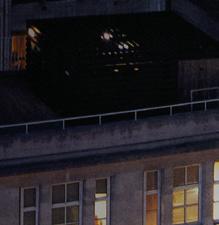
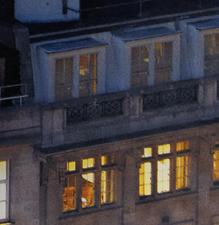











Sis offering visitors to the International Policing Exhibition, APA-ACPO 2010, the opportunity to see demonstrations of their mobile data security and data destruction services. The innovative, state-of-the-art data destruction vehicle will be outside the entrance to the exhibition and conference at Manchester Central Convention Complex from 29 June until 1 July. The company will be running demonstrations throughout each day and visitors are invited to bring along a hard drive, USB stick or other disposable data bearing device to see for themselves how Sims Recycling Solutions carries out fully auditable, total data and hardware destruction.

Sims Recycling Solutions information assurance consultant, Lorraine Roberts, said: “Demand for on-site data destruction services has been growing from police and security services over recent months due to the very sensitive nature of the data that they handle. The police and security services hold information not only on individuals but also information that could potentially impact on the UK’s national security if the
data fell into the hands of criminals. Our clients in the police and security services are looking for the peace of mind that comes from physically witnessing the destruction of their data and receiving fully auditable proof that their data has been completely destroyed through our unique online tracking system, WebView.” WebView has embedded within it the market leading data destruction product, Blancco Data Cleaner, which ensures data is destroyed to the highest international security standards, including those of
the UK government. Visitors at APA-ACPO 2010 can watch as their hard drives and other mobile data bearing devices are firstly registered within WebView before being shredded down to particles no larger than 6mm in size, guaranteeing the total destruction of both the data and the hardware.
Lorraine concluded: “Despite the total security of our transport and logistics, the biggest factor driving demand for on-site services from the police and security services is that having sensitive data leave their site is simply not an option. As a result, on-site data destruction is quickly becoming the preferred option for many police and security services.”
Representatives from Sims Recycling Solutions will be at stand D31 and in their data destruction vehicle outside APAACPO International Policing Exhibition, Manchester Central, from 29 June to 1 July. For further information contact Lorraine Roberts on 01784 249513, e-mail Lorraine.roberts@simsmm.com or go to our website at www.simsrecycling.co.uk


Standards include: ISO 9001 Quality Management, ISO 14001 Environment Management, OHSAS 18001 Health and Safety Management and work in compliance with ISO 27001 Information Security Management systems. One of the world’s 100 most sustainable corporations.



AIRPOINT conceived the PERFORMANCE Based Partnership model as a result of three key factors:
• Future budget pressure in relation to mobile data projects
• Very low usage rates for competitor mobile applications
• Return on investment horror stories. We work hard at Airpoint to form genuine partnerships with our customers. In our view, a successful partnership must include the following key features:
• Shared objectives with incentives that accurately align with desired project outcomes
• Shared risk, responsibility and flexibility
• A joint commitment to a long term working relationship
• Delivery of innovative, force-specific solutions that provide Best Value. The PERFORMANCE Based Partnership uses these features with the aim of providing a commercial model that rewards the achievement of benefits, not simply the delivery of software. Many of the mobile data projects deployed so far have shown disappointing

results when measuring actual officer usage. In a normal commercial model, the force has already accepted and paid for the solution by the time its officers start using it. This leaves the supplier in far too comfortable a position where it can point to poor user engagement and implementation as the reasons for failure. Airpoint contends that the quality of the application is a key factor in user adoption of the solution. Furthermore, we are prepared to back this contention financially with a commitment that says the force should only pay for the licences actually being used, at the point that the benefits are being realised.
This approach applies all the features that define a successful partnership and commits the joint project team to successful implementation. Cynics may comment
that there is no incentive for the force to implement more mobile devices as this will cost it more. The reality is that if the mobile solution is being used, the officer is more effective, more visible in the community, and more productive, significantly boosting return on investment. This, combined with a budget cap on the licence fee, means budgets can be set confidently. If forces are going to deliver the required savings, whilst improving the level of service provided, mobile data solutions are the only option. And a PERFORMANCE Based Partnership is the only way to achieve it without paying before the benefits are realised.
FOR MORE INFORMATION
Contact: Andy Whyte E-mail: awhyte@airpoint.net




Evo8 is a product designed and developed by CA Traffic



• In use with UK Police and European Border Police
• Fully integrated ANPR System (camera-illumination-PC-ANPR software-comms)
• 1 or 2 lane coverage from single camera


Griffin Lane, Aylesbury, Bucks. HP19 8BP






Tel: +44 (0)1296 333499 Email: evo8@c-a.co.uk www.ca-traffic.com


A TRAFFIC have been developing traffic monitoring equipment for over 15 years. Their versatile product range specialises in collecting valuable data on traffic volumes and vehicle classification.
Following extensive research and development, CA have within the past 24 months, designed and developed their own fully integrated automatic number plate recognition (ANPR) camera, the Evo8.
The Evo8 has been designed with the requirements of the end user in mind. Based on state of the art technology, the Evo8 combines all the technical facilities required for an ANPR Camera System within a small, lightweight housing including; monochrome camera for reading license plates, colour camera for overview images, infra red illumination, embedded PC with integrated ANPR reading software and various on-board comms options.
Flexibility and ease of operation were key in the development of the Evo8 and as such it has a number of design features which offer the end user many useful real world options. The ability to cover a full two lane highway (6.3m) for





example, allows the operator to view two lanes of traffic with only a single camera. Furthermore, this two lane camera can be used to view traffic in either a single direction or both directions simultaneously. Various focal lengths are offered as well as a number of on-board communications options. Combined with the ability of the Evo8 to be fitted to existing structures such as street columns, motorway overbridges and traffic signals, the vast majority of Evo8 cameras have been installed without any additional infrastructure being required. Despite having only recently appeared in the ANPR market, the Evo8 has already been utilised for a number of differing ANPR applications, such as border control (Western Europe), journey




time management schemes, origin and destination surveys, car park access control, school zone monitoring (USA) and we are delighted to announce the use of the Evo8 by the UK Police service.
In addition to the existing product a number of options will soon be available, which will increase the potential of the Evo8 camera system. 24-hour portable battery packs are already available and in the near future a 7-day battery pack will also be available to enhance the possibility of short term surveys. A laser speed measurement device has also now been successfully tested whilst fitted to the Evo8 allowing for spot speed measurements to be made. A useful addition for both survey and surveillance requirements. Overall, the Evo8 provides a full range of capabilities which meet changing user requirements and offers full value for money in the current economic climate.
FOR MORE INFORMATION
Tel: 01296 333499
Fax: 01296 333498
E-mail: sales@c-a.co.uk
Web: www.ca-traffic.com




ENVIRONMENTAL instrumentation company
Quantitech has been awarded a contract worth in excess of £1 million to provide advanced air sampling and analysis equipment to the multi-agency air quality cell that has been established following the recommendations of the Major Incident Investigation Board for the Buncefield incident.
Quantitech has supplied 18 sets of instrumentation including advanced portable Gasmet FTIR multi-gas analysers in addition to TCR Tecora high volume Echo and low volume
are delighted that the Gasmet DX4030 portable FTIR gas analyser has been chosen for this project because it was developed for applications in which almost any gas might need to be identified.”
The FTIR analyser is located in a backpack and effectively provides laboratory grade analysis in a field instrument. A Bluetooth connection to a handheld PDA provides simultaneous measurements for up to 25 compounds and the collection of a complete sample spectrum means that over 250 compounds can be analysed.
Summarising progress to-date, the Environment Agency’s Gillian Hickey, service
We are delighted that the Gasmet DX4030 portable FTIR gas analyser has been chosen for this project because it was developed for applications in which almost any gas might need to be identified
Delta air sampling equipment.
The company has also been responsible for the provision of a thorough training programme covering instrument operation, maintenance, calibration and service.
The project was created to develop an air monitoring and modelling capability for major pollution incidents affecting England and Wales. Participants include the Environment Agency, the Health Protection Agency, Public Health Wales, the Met Office, the Health and Safety Laboratory, the Food Standards Agency and local authorities.
Quantitech’s Dr Andrew Hobson has been responsible for providing initial training on the instruments. He says: “We
manager for monitoring in the Air Quality in Major Incidents project, says: “Over the last six months we have responded to a number of chemical air pollution incidents with enhanced interim arrangements.
“Our experience and the lessons learned at these incidents, which have included fires at tyre recycling sites, a waste management transfer site, an electrical recycling site and a publishing warehouse, are proving invaluable in the development of our monitoring and modelling capability, which will be fully established in April 2010.”
Portable monitoring

equipment is vital to the success of the project because of the rapid response times that have been established by the project. The Emergency Services will notify the Environment Agency within 30 minutes of a major pollution incident and the Environment Agency will then convene the Air Quality Cell (AQC).
CHEMET air modelling information from the Met Office will be available within 20 minutes with more detailed modelling provided later.
The Environment Agency will mobilise monitoring teams from one or more of eight locations and monitoring data will be provided to the AQC within two to six hours of the incident.
The Buncefield explosion near Hemel Hempstead in December 2005 raised a number of environmental issues and Quantitech’s Dr Hobson says he is “delighted to have played a role in one of the very positive outcomes to have been initiated by this major incident,” adding, “This is a very important contract for Quantitech and one that has enabled us to exercise the core capabilities of our company. Namely, leading edge technology in combination with the highest levels of technical support.”
FOR MORE INFORMATION
Tel: 01908 227722
Fax: 01908 227733
E-mail: sales@quantitech.co.uk
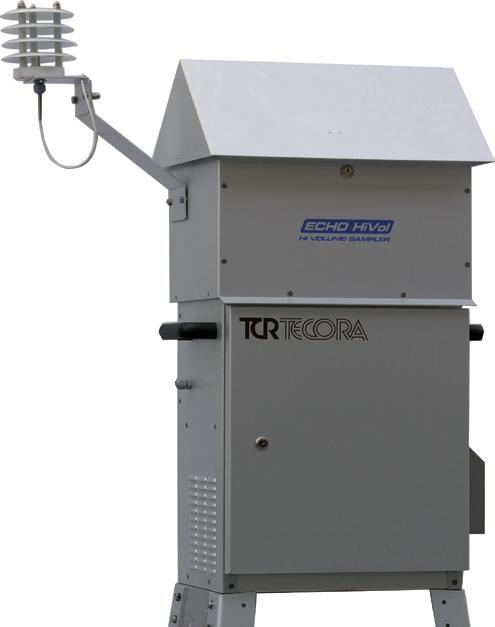
A leading firm of sniffer dog specialists from North Wales is enjoying the sweet smell of success – they’re in the running for a prestigious award
WAGTAIL UK LTD, based near Holywell, has been shortlisted for a Supplier Value for Money award from the Home Office after sniffing out illegal immigrants on lorries bound for the UK. The nomination is for their work with UK Border Agency officers at Calais and other ports in Northern France.
Wagtail UK’s staff and dogs search freight and ensure that the UK’s border security is maintained. Managing
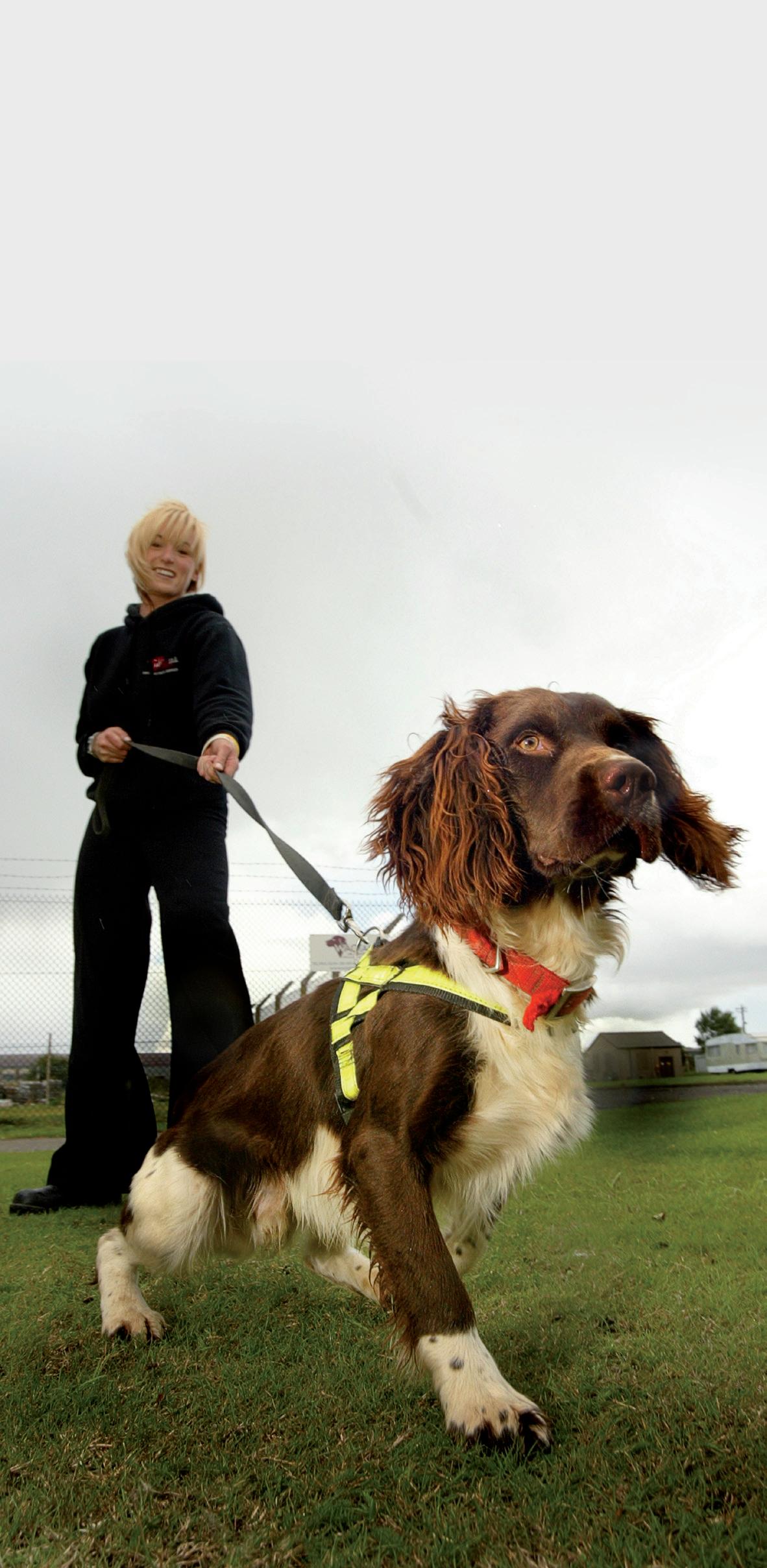
director Colin Singer, 48, who served in the Royal Air Force as a dog handler before founding Wagtail UK in 2003, is delighted to be in line for the accolade.
Wagtail UK is one of the leading providers of specialist detection dogs in the UK and throughout the world. They now employ more than 20 full time staff in the UK and overseas and the demand for their services is increasing. The company also specialises in providing explosive detection dogs to hostile and high risk environments.
Mr Singer said: “The contract with the UK Border Agency supplements the work
of their own search teams. Our teams of handlers and dogs work alongside the Agency’s own teams in the Channel ports.
“It means that the success of body detection dogs can be expanded and used to search freight 24 hours a day, seven days a week, 365 days a year.”
In one amazing case, featured in the national press recently, a German shorthaired pointer trained by Wagtail alerted UK Border Agency staff and French Police to the presence of 18 illegal immigrants hiding in a tanker of gluten powder headed for Wrexham. The pointer, Lola, an unwanted pet donated to Wagtail, somehow picked up a scent from the sealed tanker.
Mr Singer added: “Our staff aremainly recruited from a military background, utilising experience gained in Afghanistan, Iraq, the Balkans and Northern Ireland.
“We have an ongoing project to train explosive detection dogs for use at airports or other areas of concern such as seaports and rail terminals. We have clients in mainland Europe, Africa, The Middle East, North America and the Far East.
“Specific clients can’t be mentioned due to customer confidentiality but we have recently provided search dog teams at high-profile locations in London, also sporting events, international airshows, seminars, conferences and exhibitions.
“In addition, we have also provided a service for royal visits, other VIP visits, schools, colleges, factories and off-shore facilities on gas and oil platforms.
“We are approved by the Ministry of Defence to deliver search dog handler courses and we were the first private company to provide detection dogs at the construction site of the 2012 London Olympic Games.
“We offer full project management, consultancy, part or fully trained dogs, operational dog teams and handler training.
“We also specialise in training dogs and handlers for the detection of drugs, firearms, cash, tobacco, illegal foodstuffs, cadavers or human remains, animal scats, and accelerants for fire investigation purposes.”
The dogs undergo three months of training before they are deployed in the fight against persons trying to enter the UK illegally. Dogs are suitable for training from about 12 months old but they have to be the right sort of dogs with the right character. Mr Singer explained: “The training is very tough as the dogs have to work in all types of weather conditions and are subject to a number of distractions whilst searching.
“The training is based on a reward system. We use the dog’s natural ability to hunt and detect the scent required.
“It’s a game for the dog. When the dog finds the scent he is rewarded with a toy.
“We get our dogs from a number of different sources including members of the public, working dog breeders and rescue centres but what we are really looking for are active, lively dogs with

for this prestigious award underlines that we remain in the front line in helping to protect the UK Borders and it’s a worthy recognition of our success.
“It also proves that even in the present technological society, dogs remain the most reliable and consistent method of detecting a scent, whether it be a person hiding in vehicle, an illegal substance such as drugs or the detection of firearms or explosives.” FOR MORE INFORMATION
Web: www.wagtailuk.com


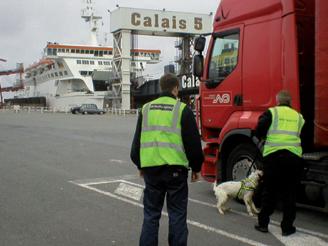


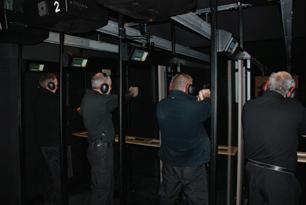

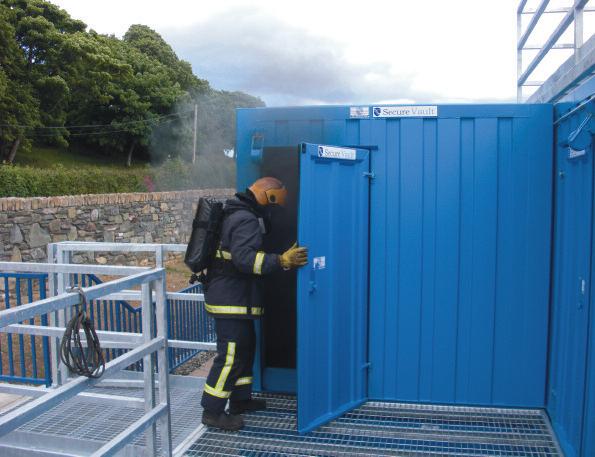
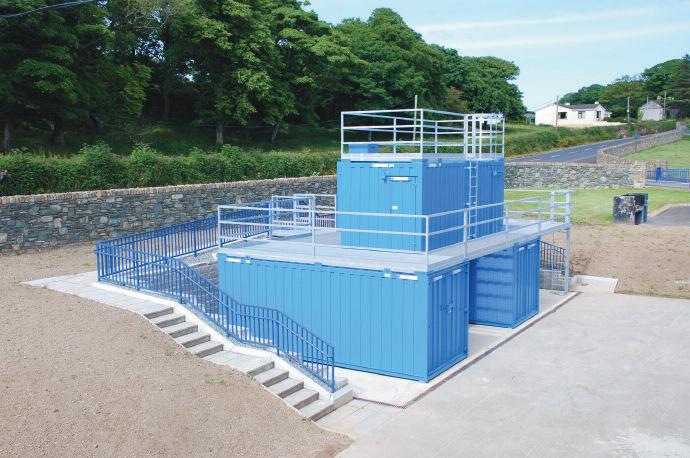


With extensive premises and a large transient population, a range of security measures are needed in order to ensure that both staff and travellers are safe while at an airport, writes Chris Pinder, the British Security Industry Association’s Southern Regional general manager
KEEPING AN EYE on all areas of an airport and ensuring that unauthorised people do not access areas they should not is mandatory. The recent incident involving the eruption of the Icelandic volcano, Eyjafjallajokull, proved just how important a role security plays in airports. With the long delays, many passengers were left waiting around airports for long periods of time and it was fundamental that airports remained on guard.
Airports already adopt various security measures such as CCTV, access control, physical security and guards and during the volcano crisis it was vital that these technologies were in place. Security would also have been used to monitor the public especially with the high volume of personal possessions on the premises not to mention individuals’ temperaments that are likely to change with prolonged delay and stressful conditions.
CCTV is particularly effective in enhancing an airport’s security and acts as a deterrent
to criminals and trespassers while also monitoring activity. A specific element of CCTV, known as Video Content Analysis (VCA), is increasingly being used in airports. VCA is the name given to the automatic analysis of CCTV images, which is used to create useful information about the content. The technology can be used to detect intruders, left packages and can count the number
sector. In addition, these customers were identified as the third most frequent users of VCA, which demonstrates the benefits the technology can bring to the airports.
PROTECTING BAGGAGE
As well as using CCTV to monitor activity on the site, airports are increasing their use of the technology in baggage holds to ensure
By applying and integrating the range of security measures that are available, airports can continue their work to prevent and deter terrorist attacks to better protect their staff and passengers
of people entering or leaving an area.
According to research conducted by the BSIA earlier this year, the use of VCA in airports is increasing. The research demonstrated that over 60 per cent of CCTV suppliers surveyed provide VCA technology to customers in the aviation

that no contraband items are being added to a bag for criminal or terrorist reasons. Ensuring the security of items carried onboard commercial aircraft combines technology with procedures for inspection and screening in the four categories of hand baggage, luggage checked into the
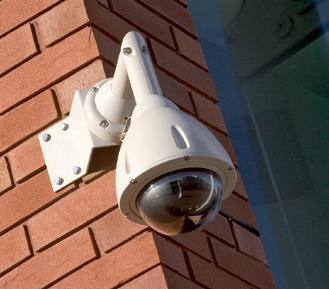

The eruption of the Icelandic volcano, the release of the Lockerbie bomber and the attempted terrorist attack over Detroit on Christmas Day last year all serve as a stark reminder of the importance of security at airports
hold, travellers themselves and cargo.
The most visible of these measures is the security checks conducted on all passengers and their hand baggage before they are allowed to board an aircraft. All hand baggage, including items such as coats, handbags, laptop computers, mobile phones and cameras, undergoes X-ray examination before passengers are allowed to enter the departure lounge. In addition, travellers pass through metal detectors or, following recent developments, full-body scanners and they may also be subject to a physical search.
The security industry is working to enhance the performance of technology for screening luggage and for monitoring the movement of bags from the checkin desks to the aircraft. The use of barcode readers to scan the labels of bags automatically links them to individual passengers at the time they board to ensure that unaccompanied luggage is not loaded onto an aircraft. Radio Frequency Identitifcation (RFID) chips can
also be used for this purpose and can be particularly useful in moving freight around the airport. Tag identification and location information is instantly forwarded over a network to a host computer running software to provide real-time management solutions via powerful reporting, display, and decision and control functions. Linked assets and people can be tracked and located within close proximity, thus providing an automatic, non-invasive asset protection solution while enabling freedom of movement.
Combining CCTV with access control is useful to ensure that unauthorised people are not attempting to gain access into an area that they should not. Access control includes the use of photo ID cards, key fobs, swipe cards and PIN-codes through to fingerprint and other biometric-based technologies that grant only authorised personnel access into specific areas. A CCTV camera can

monitor the access control point and in the event that someone tries to trespass, footage will be recorded by CCTV. CCTV can also be integrated with physical security. Physical technology includes the use of fencing, bollards, doors and locks, which protect the perimeter of an airport, preventing trespassers and criminals from accessing the site. Installing CCTV and an alarm system to monitor physical measures such as a fence will provide enhanced protection because if someone attempts to climb a fence, an alarm will be triggered and CCTV will monitor the incident.
The eruption of the Icelandic volcano, the release of the Lockerbie bomber and the attempted terrorist attack over Detroit on Christmas Day last year all serve as a stark reminder of the importance of security at airports. By applying and integrating the range of security measures that are available, airports can continue their work to prevent and deter terrorist attacks to better protect their staff and passengers.
The British Security Industry Association (BSIA) is the professional trade association of the UK security industry. Its members produce over 70 per cent of the country’s security products and services to strict quality standards. For further information, visit www.bsia.co.uk. The BSIA operates a local rate helpline on 0845 389 3889.
FROM THE ONSET Watchdogs Ltd was established 2001 to enable the end user to benefit from a robust and pro-active company offering bespoke security, search and protection services. Our dynamic blend of qualified professionals from Military and Police backgrounds allows Watchdogs Ltd to deploy its core services into any theatre on a global platform. We have a genuine passion and desire to deliver our services with integrity, trust and transparency enabling a long term relationship with all our clients. Watchdogs Ltd has recently expanded its training services to a diverse package of solutions to many Governmental and private organisations. Through much research we have identified a genuine concern for increasing the current level of training many organisations have received.

Over recent years the current terrorist threat has become more dynamic and well funded by radicals. It is our aim to assist companies and large organisations to develop their security solutions to assist in their business continuity plans, health and safety, risk evaluation and crime prevention. Watchdogs Ltd is proud to announce our strategic partnership with CSEC4,
together we offer an enhanced services portfolio enabling our clients to benefit from highest level of professionalism and service deliverance in both mainland UK, Europe and the middle East. With our collective experience and expertise we provide the capacity and capability to address the security and security training requirements of any customer.
FOR MORE INFORMATION
For more information about how we can support your organisation please contact us: United Kingdom 0870 750 0545 (Head Office) International Office DDI: 00381 (0) 38 220 645
E-mail: info@watchdogs.ltd.uk Web: www.watchdogs.ltd.uk
A strategic SMS text message plan can be an invaluable way to communicate with your community in the event of an emergency
Torganisations, large or small, prepare themselves for all potential eventualities. SMS text messaging is an ideal emergency incident planning communication tool. As everyone has their phone with them at all times, text messaging provides the perfect rapid response mechanism in the event of a disaster or incident. A text message can be sent from a computer to every member of your community in a matter of minutes, whether your community is tens of people or hundreds of thousands. Importantly the message can also be triggered from pre-authorised mobile phones.
SMS is a powerful disaster contingency tool that enables your organisation to communicate directly with all members of your team or community quickly and efficiently, from individuals and small groups to tens of thousands. You will also be able to send safety
• At least 20 per cent of all organisations will suffer fire, flood or storm, power failures, terrorism or hardware or software disaster. Of those without a business continuity plan: 43 per cent will never re-open 80 per cent fail within 13 months 53 per cent of claimants never recoup the losses incurred by a disaster. Source: Aveco
• Major systems downtime costs (15 per cent of organisations) over £50,000 per hour. Source: Information Age
alerts of areas to avoid, prevent unnecessary journeys and wasted time, contacting all customers and staff instantly. The message can be sent securely from your mobile via your txttools account to all customers or staff instantly, from wherever you are. txttools very importantly provides an inbound information route for staff to contact you and your team, which works even when network coverage is poor. In an unfolding situation you can send regular updates to advise all vested parties and choose to receive information back in from people at the situation. To be prepared you can also pre-write message templates to allow quick, but well thought out messages to be sent by any member of staff.
SMS text messaging is socially and digitally inclusive, over 98 per cent of UK adults have a mobile phone. Many organisations are adopting simple-to-use interfaces from companies such as txttools. co.uk This service allows the user to send and receive SMS text messages from their computer and track the delivery, much like e-mail, but with audited delivery. Having the ability to create discreet groups of customers, clients, patients or staff can have major benefits when you want everyone to be notified with a single message. The tool is completely flexible, so you can send a message to a group or to an individual person. Messages can be sent instantly or scheduled at a later time and date. The schedule can be set months or even years in advance and sent out when
Customers can be added to lists requesting information and replies may be automated or custom sent. Many organisations are now incorporating txttools into their disaster planning, it is proven to be the fastest, most reliable method for communicating with large groups of people.
WHY ARE THEY CHOOSING TXTTOOLS®?
txttools has an uninterrupted message delivery in the public sector for the last nine years, txttools is used by councils, police forces, schools, hospitals, clinics, connexions and over 45 per cent of the UK colleges and universities. A robust sophisticated messaging platform that is easy to use underpins the company’s business. The txttools team have and continue to respond to development needs of the community. The application includes an array of features; two-way messaging, it is secure online access 24 hours a day seven days a week from any PC (using the same security as online banking). You can send messages to groups or individuals, instantly or schedule for later delivery you can also track delivery of every message. It is possible to convert a text message to voice mail if the number is a landline, there are inbox rules, RSS feeds and auto responders. The txttools team have an outstanding reputation in both their face2-face customer training and unlimited support which is included in the package.
FOR MORE INFORMATION



It’s been a hell of a year so far for the beleaguered Department for Homeland Security, writes Chris Yates
FOUND WANTING in its handling of the Christmas Day airliner bombing incident, the Department for Homeland Security (DHS) hastily revised certain of its procedures to stop those with intent to harm getting on planes, but neglected to ensure the air carriers receiving the information read it in timely fashion. The result being that one of the country’s most wanted very nearly escaped by plane following the attempted bombing of Time Square in the heat of down-town New York city at the beginning of May. This doesn’t amount to a good resume of skills for a government department that has a US$55.1 billion budget currently and is charged with overseeing an “integrated, effective and efficient approach” to enhanced national security. Rumour has it that the man occupying the seat where the buck really does stop, President Obama, is incensed at DHS’ inability to stop the bad guys doing bad things on his watch and has been demanding answers from its top brass. But a very real question mark hangs over whether he’ll get fact or fiction from a government department so clearly out of touch with reality?
The gaff prone boss at the Department for Homeland Security (DHS), Janet Napolitano, has been singled for much ridicule in the US media, given that her initial public comment on both incidents has given the impression she had a tenuous grasp on the nature of the threats unfolding around her, as well as an inability to assimilate facts in the fast paced investigations that followed. Perhaps her most famous error of judgement came over the Christmas period when she stupidly claimed that Umar Farouk Abdulmutallab’s failed airline bombing attempt, was proof positive that the security system had worked. In the more recent incident she has once again been castigated for foolishly arguing that the failed Time Square car bombing was probably the work of a lone individual with no terrorist affiliation.
In a nation and more specifically a seat of government that is so obsessed with spin, such gaffs can perhaps be excused away as the nature of the beast. But while the media focuses its ire on accident prone personalities, it is missing the fundamental issue that these two incidents show succinctly that US counter terrorism strategy is failing to deliver the goods.
Napolitano announced in early April that, effective immediately, the Transportation Security Administration (TSA), the responsible agency within
her department, would require new enhanced security measures to be implemented by all air carriers with international flights to the United States.
“These new measures utilise realtime, threat-based intelligence along with multiple, random layers of security, both seen and unseen, to more effectively mitigate evolving terrorist threats,” she said at the time.
After the spin has been distilled what’s left doesn’t amount to very much at all. Sure, there’s been a modifying of the processes used to create “No Fly” and “Selectee” watch lists as well as a redefining of the criteria by which names are added to such lists.
The new approach aims to use real time information about terrorist suspects, such as their recorded physical description, partial name or travel pattern, to match actual travellers with any or all of the numerous traits retained on databases. Those who match any or all of the criteria are then required to undergo additional screening measures before being allowed to fly to the United States. Napolitano, claimed at the time that this new regime “more surgically targets individuals of concern”, ensuring that those on the “No Fly” list are never able to board an aeroplane.
This was shown to be a spectacular failure, the moment that Faisal Shahzad stepped aboard Emirates flight EK202 at New York’s John F Kennedy (JFK) International Airport, on the evening of 2 May.
CHASING SUSPECTS
Faisal Shahzad is charged with perpetrating the attempted bombing in Time Square. To the JFK based Emirates check-in staff boarding passengers on EK202, he was just another last minute flier heading home from a leisure or business trip.
To the Federal Bureau of Information (FBI) he was quite simply the most wanted man in the country. That he was sitting in a seat aboard a plane already taxiing for take-off when his presence was discovered, speaks volumes of the capability of the system to prevent him from almost escaping justice. Available information about the sequence of events leading to his arrest paints a damning picture of systemic failure by intelligence services and law enforcement. Following a weekend of feverish activity by both intelligence and law enforcement agencies to track down the person or persons responsible for the attempted bombing, he had not only been placed under surveillance but his name had been entered into the “No Fly” list as a
known and most wanted individual. Yet he was able to drive to the airport, book his flight via cellphone en-route, pay for his ticket in cash on arrival, check-in, pass through immigration and security controls and actually board the aircraft without anyone as much as batting an eyelid.
The list of failures was both impressive and depressing:
• The FBI had been tasked with covert surveillance but reportedly lost contact with him as he fled to JFK.
• His cellphone number was apparently known to the authorities, though activity seemingly wasn’t being actively monitored in real time.
• His name had been added to the “No Fly” list, but no method apparently existed to flash update airline reservation systems to be on the lookout.
• Emirates, his airline of choice, queried neither his late booking nor method of payment.
• Borders & Customs (BCP) and Transportation Security Administration (TSA) failed to spot him subsequent to check-in and prior to boarding. It took the eagle eye of a single Borders & Customs Protection (BCP) officer physically checking the names of last minute passengers against the watch lists to finally connect the dots before the aircraft got airborne and outside US airspace.
The blame for such systemic failure is inevitably and always shifted sideways. In this instance blame has been shifted to airlines for apparently not having systems in place to update the watch lists and actively alert reservation and check-in personnel in real-time. It has been reported that watch lists typically took upward of a maximum 12 hours to be reported down the line to traveller facing personnel. DHS, TSA and BCP cannot be absolved of blame collectively or independently though. Basic common sense dictates that where regulation is being changed, the regulator should first check that those who are regulated have the capability to comply. TSA instruction to airlines has retrospectively been tweaked and now requires airlines to update their systems every couple of hours.
Significant doubt remains as to whether the odd nip and tuck to a demonstrable failure is sufficient to ensure the bad guys don’t get on planes though, since this new though hurriedly revised policy still requires a decision being made by sometimes poorly trained private contractor staff on a minimum wage and going through the motions.


HUMAN BEINGS have evolved into remarkably sophisticated total security systems, designed to sense and solve problems that threaten survival in hostile environments.
However, in an advanced “civilized” society, this intuitive capability is not always fully utilised or even appreciated, which can often lead to a costly over-reaction to an event or, at the other extreme, a deadly muted or non-existent reaction. We typically only draw upon this instinctive capability when placed in a hostile environment where we seek to survive by:
1. Accessing an intuitive database of goals that an adversary could have in mind;
2. Associating these goals with a set of threats (threat profile) that the adversary would initiate to achieve a particular goal; and then
3. Using our five senses for surveillance, acquisition, tracking, interrogation and verification (SATIV) of threats – within the threat profile – to assess the intentions of the adversary so that an appropriate measured response can be initiated.
A simple example would be a soldier lost in an environment in which there are both hostile and friendly forces. Before encountering an unknown group the soldier would instinctively perform a SATIV analysis using his five senses recognising that the threat profile for the

hostile group would revolve around stealthy actions designed to keep the lost soldier unaware of its location, while the friendly group’s behaviour would be designed to reveal its location to the soldier.
Therefore, the soldier would tune his five senses to differentiate between stealthy action associated with the hostile troops’ threat profile and the more visible activities of his colleagues. The soldier’s “measured response” to stealthy behaviour would be to retreat after verifying the presence of hostile troops, whereas the measured response to visible activities would be to advance after verifying the presence of friendly troops. Today’s security systems fall short of providing “total security solutions.” They simply extend and enhance our five senses through technology. For example, surveillance across the electromagnetic (Imaging) and acoustical (Sonar) spectrum is a technological extension of our senses of sight and hearing. Radar is simply an extension of our sense of touch, while the detection of high explosives and bacterial pathogens is an extension of our senses of taste and smell.
It’s true that advanced technological tools can play an important role in the surveillance, acquisition, tracking and interrogation of sophisticated threats, but this does not constitute a truly total security solution. What’s needed is for the copious amounts of data generated by security systems to be considered in a manner that verifies threats associated with the threat profile of an aggressor’s goals. Without understanding the aggressor’s goals and the threats associated with those goals this data is essentially useless; it would be difficult, if not impossible, to verify the aggressor’s intentions, which is needed to drive an appropriate measured response. Without integrating an aggressor’s goals and associated threat profiles with data acquired by a security system, first responders either don’t act at all or, on the other end of the spectrum, completely over-react.
For example, the UK CCTV User Group estimates that there are 1.5 million CCTV public space surveillance cameras in city centers, stations, airports and major retail areas. But there is little evidence that the data from these cameras is used to deter crime. A 2008 Report by UK Police Chiefs concluded that only 3 per cent of crimes were solved by CCTV surveillance data. At the other extreme, in 2008, a man carrying a backpack thought to contain explosives scaled a perimeter fence at Heathrow days before the opening of the new Terminal 5. He managed to make his way onto the active field before being arrested, closing a runway for hours and causing numerous flight delays and cancellations. There were no explosives. The most serious problem faced by today’s security infrastructure is the inability to react to security breaches with intelligent, measured responses that minimise escalation of breaches and prevent unnecessary costs. Oncam Global is dedicated to solving this problem and designs true total security solutions by integrating threat profiles associated with the goals of an aggressor with our advanced surveillance, acquisition, tracking, integration and verification (SATIV) process and technologies – so that intelligent measured responses can be initiated. When the human instinct to survive is seamlessly coupled with advanced technology, inappropriate, costly responses can be avoided and, most important, ultimate safety enhanced.
James Ionson, Ph.D., is CEO, Oncam Global Group. He was a member of the U.S. Department of Defense Senior Executive Service credited with the creation of the Innovative Science and Technology Directorate for President Reagan’s Strategic Defense Initiative (“Star Wars”), now called the Missile Defense Agency. He has held top-secret and other national security clearances with the Defense Intelligence Agency and has advised the Pentagon and NASA on critical technology issues.
The most serious problem faced by today’s security infrastructure is the inability to react to security breaches with intelligent, measured responses that minimize escalation of breaches and prevent unnecessary costs

A|D|S discusses the UK’s aerospace, defence, security and space industries, and welcomes you to attend Farnborough International Airshow
THE UK IS EUROPE’S leader in the high-technology manufacturing and services sectors represented by A|D|S. Together they employ over half a million people in 9,000 companies and contribute over £60 billion (US$90 billion) per year to the British economy.
The Farnborough International Airshow, itself a worldleading event, is an opportunity to showcase these best of British qualities to the world, alongside our global partners that we welcome to the UK year-on-year. All of us at A|D|S and FIL look forward to greeting the world’s aerospace, defence, security and space industries at the 2010 Airshow and beyond.
A|D|S is the trade organisation advancing UK Aerospace, Defence, Space and Security industries. Farnborough International Limited (FIL), which runs the Airshow, is a wholly-owned subsidiary. A|D|S has offices in England, Scotland, Northern Ireland, France and India with new offices planned in China and the Middle East. We are the national organisation representing the huge number of successful SMEs in these sectors.
A|D|S was formed from the merger of the Association of Police and Public Security Suppliers (APPSS), the Defence Manufacturers Association (DMA) and the Society of British Aerospace Companies (SBAC) in October 2009. A|D|S also encompasses the British Aviation Group (BAG).
Small and medium sized enterprises (SMEs) are the backbone of the UK’s high value manufacturing and services industries in aerospace, defence, security
and space. At least 9,000 companies make up these highly diverse skilled engineering and support sectors. Every single large aerospace or defence equipment contract is underpinned by the hard work of hundreds of SMEs.
The UK defence industry alone has more SMEs than the French, German, Italian, Spanish and Norwegian industries combined. This enables UK SMEs to respond to the needs of the Armed Forces as a priority, speeding up the deployment of life saving battlefield capabilities.
For the nation to succeed it needs both the presence and investment of large international winners and a highly competitive SME supply base that has technological and manufacturing excellence to provide innovation and agility.
CIVIL AEROSPACE
Aerospace is an attractive growth sector in which the UK can continue its winning ways. The UK is number one in Europe and number two in the world behind only the US in a market growing at twice the rate of GDP. It employs over 100,000 people and generates £20 billion per year to the UK economy. The UK also has vibrant academic institutions that underpin our knowledge and skills.
The UK has set its sights on:
• Playing a major role in the design and manufacture of the new short range aircraft in 2020-2025
• Continuing to be a world leading technological centre in the design and manufacture of aero engines and wings
• Retaining its aerodynamic skill base in both fixed wing aircraft and rotorcraft
• Investing in commercial Unmanned Aerial Systems (UAS) and pioneering their use by society

• Investing in the next generation of lightweight materials and their application in this industry.
SUSTAINABLE AVIATION
Sustainable Aviation (www. sustainableaviation.co.uk) is a comprehensive strategy for the long-term sustainability of the UK aviation industry. This pioneering initiative brings together the UK’s leading airlines, airports, aerospace manufacturers and the air navigation service provider. Signatories to the strategy are committed to delivering significant reductions in emissions of carbon dioxide, oxides of nitrogen and aircraft noise.
The ‘CO2 Roadmap’ (http://tinyurl.com/ saco2) developed by Sustainable Aviation is the industry’s assessment of how it can continue to grow whilst limiting its impact on climate change such that emissions of CO2 from UK aviation can be reduced to 2000 levels by 2050 – even with a forecast trebling in passenger growth.
SECURITY
The UK security industry comprises 8,000 companies and ‘UK Security’ employs around 600,000 people. The innovation and high-technology products and services that the sector produces deliver security to the UK population and bring rising economic benefits through the successful export of our world-leading equipment overseas. Security is the hidden hand that keeps us safe. Innovative UK-based security companies provide the capability for UK Government departments to deliver for the whole British population as well as for their counterparts overseas to do the same for their countries. An example of our excellence in overseas markets is that UK companies supply over

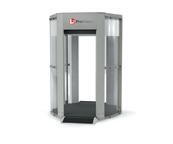
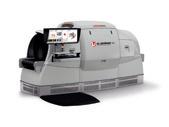
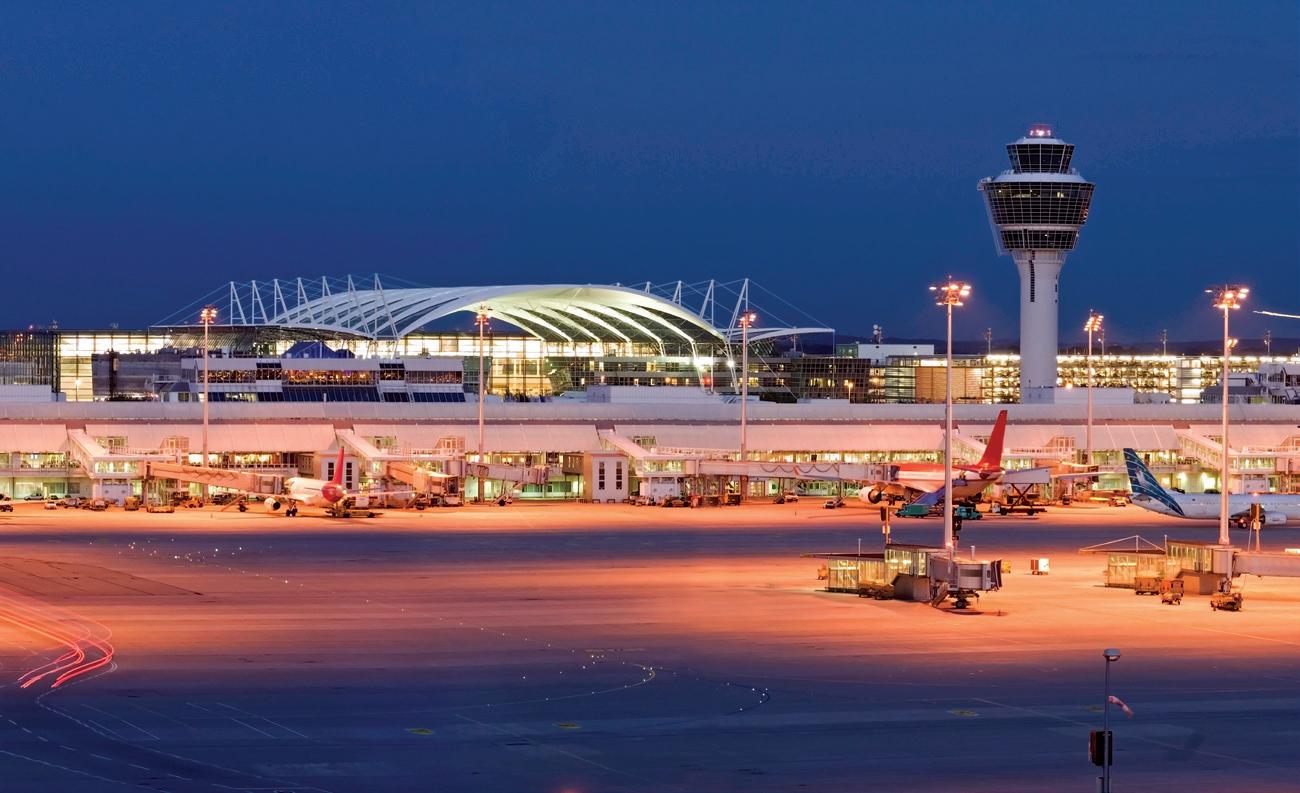

Clear passengers, baggage and cargo quickly and confidently with innovative technologies from L-3.
We help keep major global airports running smoothly with centralized, integrated security and detection systems for a range of airport functions. From checkpoint to checked baggage to cargo screening. L-3’s leading solutions can add speed and efficiency to your security operations.
For more information, please visit www.L-3com.com/sds.
60 per cent of airport security systems to the US Government’s Transport Security Administration. Figures issued recently by UKTI DSO suggest that despite the recession the UK security industry’s exports were valued at £1.36 billion last year and that this was an increase of more than 14 per cent on previous years. Our challenge is to increase the UK’s role in these global markets, starting from its already creditable 6 per cent global market share and promoting our capability to global customers.
The space sector in the UK grew 9 per cent per annum between 1999 and 2007 and it is likely to grow from £6bn in 2008 to £40bn by 2030. In 2007, space generated £5.9bn of revenues in the UK and the sector supports around 70,000 jobs. It is no exaggeration to say that without space infrastructure much of our global economy would now cease to operate. In fact without space hardware such as satellites the world would lose much of the growth it has experienced over the last 50 years. Space is an essential engine of the economy and our dependence on its infrastructure will continue to grow. With eyes firmly on the future, the UK space industry is aiming to increase its share of the global market to at least 10 per cent from a current level of 6 per cent. The UK is entering a major growth period for space. The UK Space Innovation and Growth Strategy sets out how the UK is planning to raise its game. UK space companies have built up leading capabilities in key export markets, including
broadband, monitoring deforestation and geo-data. The UK is now the leading exporter of satellite-based tools to the developing world. Britain’s technology lead in satellite radar, space software, small satellites and military communications represent huge export opportunities.
The UK defence industry represents 10 per cent of UK manufacturing, is number one in Europe and second only to the US globally, employing over 300,000 people and generating over £35 billion per year to the UK economy. The industry also works hand-in-hand with the UK Armed Forces from factory to frontline, for example over 4,000 industry personnel are currently working with our troops in Afghanistan. Each year defence exports provide on average £5bn to the UK economy and it is the largest overseas supplier of defence equipment to the United States. The demand from overseas for British-made equipment – from fast jets to helicopters and electronic systems to personal kit for individual troops – is high because of its quality and provenance. Its use by UK forces in recent campaigns also provides confidence to export customers. Defence exports offer the UK a route out of recession and excellent returns on initial investment.
The UK has had a 21 per cent share of the defence export market in the last five years and defence exports support 65,000 UK jobs. Defence in the UK is responsible for 40 per cent of defence R&D in Europe and contributed £12bn in value added to the UK economy in 2008 – up 15 per cent
since 2006. The defence industry in the UK submitted more than twice the number of patents applications compared to the pharmaceutical sector between 2007-10.
The major challenges for the industry are:
• To work closely with the government on the Strategic Defence Review
• To assist with the reform of the procurement process
• To encourage the reversal of a decline in research and technology spending
• To increase the exportability of UK equipment and services.
Farnborough International Airshow
Farnborough International Ltd (www. farnborough.com) is a subsidiary company of A|D|S. FIL has a three-strand business as the organiser of the biennial Farnborough International Airshow (FIA), operator of Farnborough International Venue and Events (FIVE), and as international consultants for civil, defence and business aviation events including Bahrain International Airshow 2010 (BIAS) and India Aviation 2010. The Farnborough International Airshow (FIA) is one of the world’s most iconic global aviation events. The most recent airshow, FIA 2008, was a record-breaking year for business with US$88.7 billion worth of orders announced during the show. 2008’s event also featured 165 aircraft in static displays and spectacular flying displays with the public weekend attracting a staggering 153,000 visitors.
E-mail: enquiries@adsgroup.org.uk Web: www.adsgroup.org.uk
THE SYSCO SONAFLEX Mk2 sensor system is a covert buried sensor that has been designed to provide a low cost passive buried sensor that is both direction sensing and frequency selectable. Ideally suited as both an approach sensor or as a primary sensor. As the Sonaflex buried sensor is a passive sensor it is not affected by tree roots or utility cables and water pipes. The sensor is easily and quickly installed without the necessity of trenching or major groundwork’s. The sensor cable is not affected by the seasonal changes to the ground conditions, such as heavy rainfall and snow.
As no major groundwork’s are necessary, once the sensor cable has been installed the ground healing process is relatively quick and leaves no trace that a sensor cable has been installed. This makes the Sonaflex buried sensor ideally suited as a primary approach sensor for VIP residences and other areas where covert sensors are required to provide an early detection of intruders.

buried sensor is a passive sensor it will operate in areas which may be affected by other third party equipment such as high powered signal generators and in the close proximity of roads.
as prisons, nuclear power stations and military sites in addition to VIP residences.
FOR MORE INFORMATION
E-mail: psmsysco@aol.com

The world is coming to realise that video surveillance is an effective deterrent and an essential safety technology
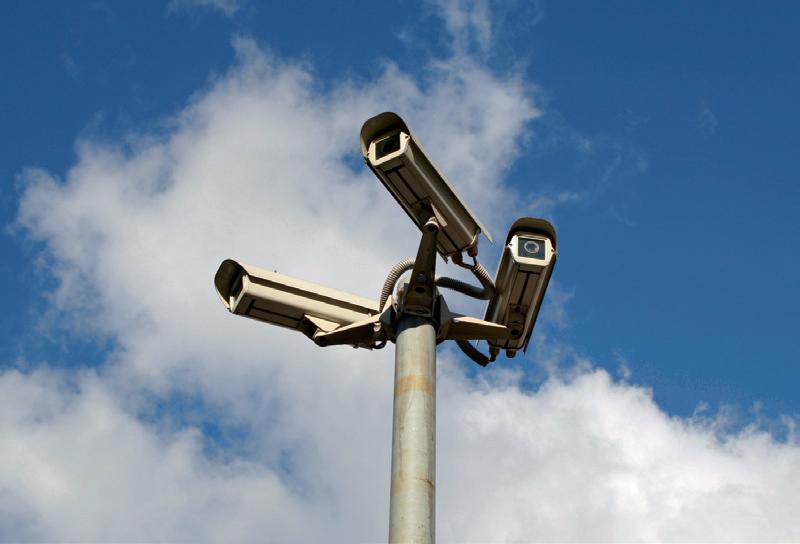
FORGET THE ‘BIG BROTHER’ image; facilities managers, plant operators and public servants across the world are coming to realise that video surveillance is an effective deterrent and an essential safety technology. Industries and applications as diverse as power utilities, water plant, rail, traffic control, shipping, commercial buildings and facilities, and industrial plant are all turning to video surveillance technologies as a means of assuring the safety of employees and customers in dangerous areas, as well as securing assets against intentional or accidental damage. In addition, in our increasingly litigious society, effective surveillance and recording can provide a means of defence against frivolous claims.
LIVE MONITORING & ANALYSIS
Meeting these diverse needs places stringent requirements on surveillance technology, and this has evolved rapidly in recent years, delivering a new paradigm for live monitoring and live analysis. Computer based systems of today are able to use software models to make a judgement on what is normal behaviour and what is anti-social behaviour, or to provide early warnings as potential hazards become evident, or even to monitor patterns of travel/movement and derive improved systems/schedules for handling peak traffic. Indeed, software analytics are one of the fastest growing applications for increasingly
capable CCTV-based surveillance systems.
be monitored in real-time over the internet, potentially from anywhere in the world. The attraction of IP-networks as the standard for video surveillance is a function of its massive, established installed base, and the fact that the technology is standardised, low cost and low risk. It is reliable, well understood and well supported. But video traffic is high speed and high bandwidth, and it makes stringent requirements of the IP infrastructure devices that must handle it. The IP switches, for example, that provide connectivity to the cameras and route the data onto the Ethernet network must combine simple connectivity with the ability to handle demanding video traffic.
GarrettCom Europe has responded to the evolving needs of video surveillance for IP-based technologies with new ranges of Ethernet switches which form the critical infrastructure for a modern, high-bandwidth camera network.
The latest Ethernet switches provide connectivity for clusters of surveillance cameras and indeed associated security devices – VoIP telephones, Ethernetenabled sensors, access control devices, etc – and combine this with fibre-optic connectivity to the control network for high-bandwidth transmission of video data.

Where this all starts is with a move away from the traditional analogue technologies that have historically characterised surveillance installations, and towards digital camera and network topologies. The traditional picture of video surveillance is built around analogue cameras, feeding their video over coax cables to a multiplexer, which in turn feeds a combination of monitor screens and video recorders. But as David Moss, European sales and marketing manager at GarrettCom Europe, points out, there are severe limitations of this technology.
“There are weaknesses at all levels of the system. There is no flexibility within the installation to meet evolving requirements and with the exception of the very best analogue cameras, the picture quality is generally not good enough to meet today’s requirements for, say, face or number plate recognition. To monitor the video in real-time, you have to be within reach of the coax feed, which in practical terms means that you need to be on-site sat in front of a screen. The limitations of the video recording technology mean that any analysis of the data has to be historical analysis – there is no possibility for real-time software analysis.”
Once a video surveillance system is part of an IP-network, the requirement for on-site monitoring is eliminated, a video feed can
Managed switches from GarrettCom also offer the benefits of IGMP (Internet Group Management Protocol) software as standard. This is key, with modern high definition cameras transmitting data at rates as high as 5Mbps. This multicast traffic has to be effectively managed, to prevent unnecessary traffic flooding the various communications interfaces and bogging down the entire network. The IGMP protocol provides a means to manage this traffic.
Compact, reliable, rugged, hardened for use in demanding plant environments and outdoor use, and with MTBFs in excess of 20 years, GarrettCom Europe’s Ethernet switches for video security and surveillance applications meet the all the requirements of the modern surveillance installations.
“They offer flexible combinations of copper and fibre Ethernet ports, with appropriate port counts for typical clusters of IP-enabled security products, allowing networks to be developed highly costeffectively,” says Moss. “And for ease of installation of surveillance systems, many GarrettCom Europe Ethernet switches now provide Power over Ethernet (PoE) as standard, supplying power to connected devices over the standard data cables, and so eliminating the need for costly cabling back to a central power source.”
For more information on GarrettCom Europe’s solutions for the security & surveillance, defence and counter terror industries, please visit: www.garrettcom.co.uk/solutions
Perfectly balances light and dark areas in challenging lighting conditions to reveal detail in both the foreground and background


— Optical Tripwire — Appear/Disappear — Subject Tracking — Motion Detection

Protect sensitive areas from being viewed with fully scalable and adjustable privacy masking


Third generation Samsung Super Noise Reduction eliminates image noise in low light conditions without creating ghosting or image blur to dramatically increase image quality whilst reducing file sizes


The SV-5 DSP is the latest and most powerful chipset from Samsung. Capable of delivering up to 650 TV lines colour resolution and with intelligent video analytic functionality among its comprehensive list of features, it has been designed to bring outstanding image quality to even the most demanding applications.
The SV-5 DSP chipset sits at the core of a wide variety of cameras and domes from Samsung, allowing users to take full advantage of its superb performance and functionality, whilst being able to choose the perfect product for the job at hand.
Provides sharp, well defined edges on all moving objects to deliver enhanced detail and image reproduction


Pre-configured settings for a wide range of conditions makes set-up easy
Set-up and control cameras via the coaxial cable from the comfort of the control room




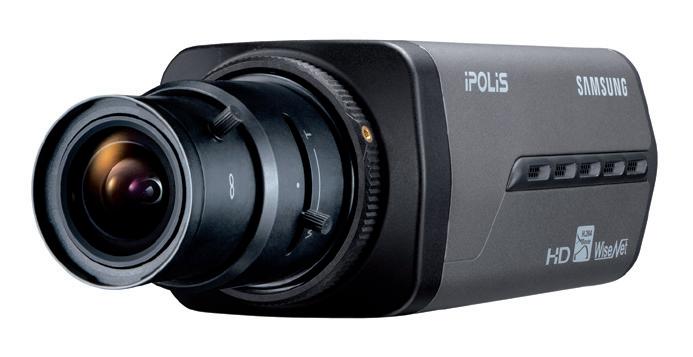
WHEN CCTV IS EXPECTED to play a part in saving lives as well as protecting property and assets, nothing less than recognition quality images are likely to be acceptable. Fortunately with the threat of attacks continuing to dominate the thoughts of senior security managers as well as the emergency services, recent significant advances in IP based technology has ensured that CCTV can contribute significantly to the war on terror.
INVESTMENT IN TECHNOLOGY
Samsung has a reputation for producing some of the finest surveillance products in the world. One of the major reasons for this is attributed to the company’s ongoing investment and development of DSP chipsets that form the core technology of its cameras and domes. Cameras such as Samsung’s new 1.3M HD network camera are capable of producing images of a quality, even when lighting levels are very low, which could not be imagined just a few years ago.
The 1.3M HC camera incorporates the Samsung WiseNet1 DSP chipset, which delivers a long list of features
to meet the demanding requirements of mission critical applications.
One of the most impressive features of the WiseNet1 chipset is its Intelligent Video Analytics (IVA) capability, which includes optical tripwire and enter/exit direction detection whilst an Appear/ Disappear function can detect the movement of objects. IVA also has a scene change tampering function that creates an alert if, for example, paint is sprayed on a camera lens or there is an unauthorised movement of a camera away from its usual field of view.
Full duplex bi-directional audio provides the option of interactive communication between a camera’s location and a control room.
The H.264, MPEG4, MJPEG and JPEG compression methods incorporated into the WiseNet1 DSP provides users with the ability to simultaneously transmit images to multiple locations at various frame rates and at different resolutions including 1.3megapixel (1280 x 1024), 16:9 HD (1280 x 720), QVGA (320 x 240), SVGA (800x 600) and VGA (640 x 480).
With such a wide range of compression methods and resolutions to choose from,
With the threat of attacks continuing to dominate the thoughts of senior security managers as well as the emergency services, recent significant advances in IP based technology has ensured that CCTV can contribute significantly to the war on terror
a number of different users, if authorised, will be able to simultaneously monitor live images at one location, record video evidence at another or view live and recorded images on a Smartphone. At the same time JPEG images of an incident can be attached to an alarm email notification with the additional facility of storing pre and post-alarm images on a camera’s internal SD memory card.
The new WiseNet1 DSP also incorporates a wide range of practical time and cost saving features including PoE (Power over Ethernet) and BNC as well as Ethernet outputs, so that video can be transmitted via coaxial cabling as well as over a network.
Other advances in technology which contribute to the provision of video of the highest quality include:
Samsung Super Noise Reduction technology eliminates noise in low-light conditions without creating ghosting or blurring. SSNRIII features “Pattern Matching” to simultaneously reduce noise and maintain the object’s edges in both static and moving images. After removing the noise, a very small 3 x 3 pixel matrix matching system is employed to ensure the scene produced by the camera is perfectly matched to the original image. There is also the added bonus that this amazing technology can save up to 70 per cent hard disk space on a digital video recorder, whilst maximising bandwidth when viewing the video over a network.
Highlight Compensation technology identifies areas of peak white, i.e. excessively bright areas, in the image and neutralises it by inverting them to black/ grey. This enables the camera to effectively see past these areas allowing the operator to view previously hidden details.
Digital Image Stabilisation (DIS) technology that can negate the effects of the camera shaking due to high winds or building vibration.
Samsung can claim that its substantial investment in R&D has been more than justified by remarkable improvements in terms of image quality, low-light performance and additional functionality. Just three years ago it could not perhaps be imagined that innovative technical features such as Digital Image Stabilisation, Highlight Compensation and Dynamic Backlight Compensation could be available in anything other than the most expensive of CCTV cameras. And yet they are all now readily available in commercial and competitively priced cameras.
If you would like further information on the comprehensive range of cameras and domes which benefit from the results of Samsung’s investment in DSP chipset technology, please e-mail STEsecurity@samsung.com or telephone +44 (0)1932 455308.
Wireless and fibre communications solutions for secure,
THE APPLICATIONS for wireless based video security networks are coming under renewed scrutiny as the public sector comes under increasing government pressure to cut costs whilst maintaining service levels. It is a fact that, when implemented correctly, it is virtually impossible to detect any difference in performance between fibre and lineof-sight wireless-based video networks. They can deliver equivalent levels of latency and picture quality as fibre at a significantly lower cost, whether used as standalone networks, extending the range of existing fibre networks or used to rapidly deploy temporary communications links for covert or overt operations.
Wavesight has become one of the world’s leading video surveillance market specialists and can trace its roots back to the early days of EMI and the Central Research Laboratories in the 1930s. It has a
the world’s largest license exempt contract for a wireless video network in India utilising over 500 cameras.
A key difference between Wavesight and traditional suppliers is that every system is developed with the bandwidth to deliver video images at rates of up to 25 fps and latency rates of less than 3ms at ranges of up to 40km. The company provides a comprehensive range of transceiver solutions that enable high quality images to be received from remote locations where traditional cabling is either not practical or simply not affordable. This is something that cannot be reliably achieved with the voice and data based products that have commonly been deployed in an attempt to run bandwidth hungry video applications. Wavesight systems also meet all relevant international standards for outdoor use, including IP67 industrial protection,
Wavesight has a long history of first-to-market innovations for secure, high bandwidth, long range transmission of data, voice and CCTV video to the 802.11 standard and works closely in partnership with the world’s leading systems integration companies to meet diverse client security applications across the public and private sectors
long history of first-to-market innovations for secure, high bandwidth, long range transmission of data, voice and CCTV video to the 802.11 standard and works closely in partnership with the world’s leading systems integration companies to meet diverse client security applications across the public and private sectors.
In 2007, Wavesight became part of the Jaltek Group, a leading technology solutions organisation that provides vertically integrated design and electronic manufacturing services, bespoke systems development, telematics and personal telemetry solutions. This acquisition has provided the financial stability required to actively research and develop new innovations and led to a new management team being installed, which has helped to regain the confidence of the market. The company has recently won many prestigious contracts across Europe, Asia, Africa and the Middle East including
and are regularly specified for diverse environments around the world including the Orkney Islands, India and Australia. Installation is another area where Wavesight systems excel, with the process being quick and easy without requiring the high levels of technical expertise needed to work with alternative voice and data-based products. Wavesight even provides installers with specific tools such RFAnalyser, to optimise the configuration and management processes. Being UK-based, Wavesight also provides a level of support that just cannot be matched by other international suppliers. It has strength in depth with support teams that offer unrivalled levels of application and technical expertise to add high levels of value to the system design, development, configuration and deployment processes. They have proven experience with many successful deployments in a wide range of environments to exceed client
expectations for every installation whether a complete solution or integrated with third party licensed and COFDM products. With a competitive pricing strategy and a straightforward and pragmatic approach to doing business, it is no surprise that Wavesight has experienced a 40 per cent increase in revenues over the last 12 months. This is no mean feat in the current challenging financial conditions and is hard evidence that the company’s wireless video solutions are now gaining real market acceptance. As a ‘standardsbased’ manufacturer of wireless video surveillance solutions to multiple Home Office departments and Police Technical Support Units (TSU) across the UK, the company is also now a preferred supplier of license exempt solutions to most of the UK’s leading systems integrators.
As well as delivering comparable performance to fibre networks and leased lines, Wavesight systems can also enable organisations to install or expand video security networks at a fraction of the cost of traditional systems. The market is already changing and where wireless was once seen as being only suitable as an extension to fibre, it is now commonly being specified to replace fibre. At just 15-20 per cent of the cost, organisations are achieving a return on investment in as little as 24 months whilst

eliminating the high ongoing costs required for fibre or leased lines will deliver further significant savings over the same period. This will be particularly important to the public sector that is now under severe pressure to cut costs as part of the government’s strategy to reduce the high debt burden on the economy. It will enable a ‘capital expenditure’ approach to investing in systems resulting in borough owned infrastructures without the line leasing commitments.
Of course, in the developing world, these are not important issues as they simply cannot afford to even consider fibre-based networks particularly when there is no visible difference in terms of performance. With proper network planning and construction, wireless is suitable for all but the very largest scale communications networks and considering the cost and reliability advantages of wireless, why would they even consider the alternatives?
Wavesight products enable wireless to be quickly and easily integrated with hybrid CCTV networks and are compatible with analogue and digital CCTV cameras, DVRs and NVRs as well as the latest generation of IP-based systems. They are manufactured at Jaltek Group’s niche UK-based manufacturing facility which is accredited to AS9100 and ISO13485 to meet the requirements
of highly regulated markets globally.
• WaveSPRINT – The market’s most compact outdoor transceiver solution with integrated aerial designed specifically for short range CCTV applications of up to 1km at up to 54 Mbps. It delivers high level of performance for point to point bridging, outdoor access point or client roles with the bandwidth to meet all video, voice and data requirements.
WaveSPRINT is a rapidly redeployable asset that delivers rapid ROI by eliminating the cost, planning delays, and disruption associated with laying fibre or leasing lines.
• WaveFLOW – This flexible transceiver solution delivers data rates of up to 108 Mbps at ranges of up to 5km providing performance equivalent to cabled Ethernet to meet the requirements of the latest high definition CCTV and the latest bandwidth-hungry applications VoIP and remote conferencing.
WaveFLOW has an integrated aerial and provides reliable and resilient point to point and multipoint bridging as well as outdoor access point and client operation in a single ruggedised package.
• WaveMAX – A powerful transceiver that uses advanced OFDM radio and proprietary technologies to deliver high quality video images at ranges up to 40km at up to 108 Mbps. It provides a flexible and cost effective outdoor bridging

solution in both point to point and multipoint configurations. WaveMAX is available with integrated aerial or standalone enabling the use of different antennas to meet a wide range of applications.
• WavePULSE – Used to remotely monitor and manage video networks to protect bandwidth integrity and ensure that wireless video networks continue to deliver the highest levels of performance. Importantly, this is achieved using standard web browsers around the clock without requiring full access to the data network. Alerts can be sent using e-mail or SMS text messaging should link quality or data throughput drop below predefined levels. WavePULSE also provides an integrated set of network diagnostics tools including radio transceiver PING, data route tracing and data capture. Wavesight is now clearly focused on the development and delivery of cost effective, flexible and easy to deploy point to point and point to multipoint solutions. These can be utilised in conjunction with 3rd party technology products to ensure that wider network infrastructure solutions can be designed and deployed to meet diverse applications. Whether used in standalone applications or integrated with existing fibre networks, wireless video surveillance solutions are now gaining real traction in a wide range of applications around the world including town centres, law enforcement, ports, harbours, airports, railways as well as high security and classified government and commercial facilities. With the full support and backing of the Jaltek Group, Wavesight is committed to becoming the de facto standard for organisations requiring highly scalable wireless surveillance networks that are designed, developed and manufactured specifically for the delivery of video.
Wavesight Limited
Unit 13, Dencora Way, Luton, Bedfordshire, LU3 3HP, UK
Tel: +44 (0)1582 578160
Fax: +44 (0)1582 578298
E-mail: sales@wavesight.com Web: www.wavesight.com
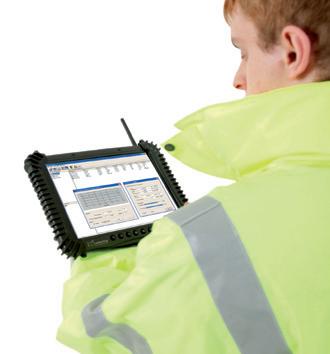
HONEYWELL’S NEW Active Alert® v4.7 video analytics solution, has been evaluated by the UK Home Office Scientific Development Branch (HOSDB) and has been confirmed as an Imagery Library for Intelligent Detection Systems (i-LIDS®) approved system both as a primary detection system for operational alert use and as an approved event based recording system for sterile zone monitoring applications. Active Alert v4.7 is therefore now approved for government use in applications for perimeter detection and protection across critical infrastructure facilities.

product. The term ‘sterile zone’ refers to an area adjacent to the perimeter boundary of a site where the presence of an object could signify intent to attack the boundary.
“To receive i-LIDS classification is an exceptional achievement for any security product,” said Jeremy Kimber, EMEA channel marketing leader, Honeywell Systems Group. “The annual evaluation process conducted by HOSDB tests security products against a high standard and this classification is testament to the quality and capability of Active Alert v4.7.”
allowing them to respond faster. In addition to i-LIDS accreditation, Active Alert v4.7 includes a number of new features such as language support for French, Spanish, Italian, Dutch and German, and compatibility with Honeywell’s EQUIP® IP Camera range. It also features Alarm Management Server (AMS), a new solution which allows security operators to monitor multiple real-time alarms simultaneously from a central location by connecting field servers together through a single dedicated server. This is ideal for large organisations spread out over vast or multiple sites, government and corporate control rooms or central monitoring stations.
i-LIDS is the UK government’s benchmark standard for video analytics technology and is awarded to security products evaluated against stringent criteria specified by HOSDB in the development of video based detection systems for government use. Of particular note is the achievement of ‘primary detection system’ classification, meaning Active Alert v4.7 has been certified for use as a standalone security system in sterile zones without the requirement of a secondary system to act as back-up, illustrating the quality and reliability of the
Project4:Layout16/9/20103:09PMPage1
Active Alert v4.7 is the latest version of Honeywell’s popular Active Alert video analytics solution which can automatically detect, analyse, track and classify the behaviour of people, objects and vehicles as they move through a scene, alerting operators to anything suspicious and
“AMS has been developed in conjunction with a major central station, containing numerous channels of analytics to work across multiple critical infrastructure sites,” says Carolyn Ramsay, global product director for Honeywell video analytics. “We know this meets the needs of this marketplace.”
FOR MORE INFORMATION
Tel: 0844 800 6892
E-mail: systemsenquiries@honeywell.com Web: www.honeywell.com/ security/uk/systems


IMED AT THE PROFESSIONAL CCTV and surveillance market, X-Stream encoders compress analogue video signals to the highly efficient H.264 Main Profile standard to provide highest quality, low latency IP video for transmission over Ethernet. By choosing the H.264 Main Profile standard for encoding, image and video quality is noticeably better when transmitted via X-Stream video encoders (also referred to as video servers), on benchmark comparisons against competitor products utilising H.264 Baseline encoding. When testing against MPEG4 video, COE’s X-Stream range performed at a vastly superior quality, rendering faces, number plates and other key quality indicators with much more clarity than MPEG4 counterparts. In fact, a video demonstrating the difference in quality between MPEG4 and H.264 can be viewed at COE’s website: www.coe.co.uk.
ADVANCED FEATURES
X-Stream includes advanced features such as onboard video analytics, electronic image stabilisation and dual streaming. These features enhance functionality of X-Stream encoders beyond their core function of compressing and converting analogue video to transmit over a digital network. Rather, they introduce real business value by enhancing the operational functionality of the video surveillance network, and improving efficiency of CCTV operators.
The X-Stream range includes a single channel boxed encoder, and two and four channel encoders, which may be box housed or rack mounted. The X-Stream range also includes a dual channel decoder, the X-Stream 200D, capable of decoding H.264 streaming Ethernet video for use with analogue devices. By rack mounting X-Stream encoders

in a standard X-Net® rack, as many as 56 channels of analogue video may be encoded and transmitted across an IP Ethernet network from each rack chassis.
X-Stream video encoders have already been provided for an 8,000+ camera COE project at Seoul’s metropolitan subway network. The video encoders are used by Seoul Metro not only for video transmission, but for intelligent video analytics enhancement, utilising the embedded analytical capabilities of the product.
The onboard analytics engine of X-Stream encoders is powered by COE’s intelligent video analytics package. Analytics uses complex algorithms to identify and alert surveillance operators to a wide variety of rules. These rules include detection of abandoned objects, unauthorised access, vehicle tracking and more. The addition of COE’s I-Command® SmartDetect intelligent analytical processing to the feature set of X-Stream video encoders, enhances the function of analogue cameras and improving effectiveness of CCTV operators.
COE’s I-Command SmartDetect has already been deployed at the Port of Singapore, for logistical and security enhancement purposes. At the port, vehicle movements around the port are tracked by SmartDetect, with alarms raised when the movement of freight is held up for too long at any particular area across the 10km2 site.
The X-Stream range also features the ‘World’s first direct-to-fibre video encoder’. This product, the X-Stream 400 FX-VL offers the additional functionality of encoding and compressing video for fibre optic transmission across extended distances. With COE’s fibre modules, transmission of distances of up to 180km is possible, suiting the medium for transmission from remotely based sites. The fibre port on X-Stream 400 FX-VL is

(CWDM) enabled. By utilising COE’s X-Net CWDM card in association with multiple X-Stream 400 FX-VL units, up to 36 channels of H.264 encoded IP video can be transmitted across a single optical fibre simultaneously.
Ian Jefferson, CEO of COE Ltd comments: “The X-Stream range is an exciting development in the video transmission market. Enabling analogue cameras to stream low-latency, low-bandwidth video across an Ethernet network is of huge benefit to sites looking to provide an incremental upgrade path from analogue to IP. The addition of video analytics and other key features such as ‘Direct-to-fibre’ IP encoding offers the user a sophisticated and flexible package for the modern surveillance system.
“Providing highest quality video has been the focus of COE Limited for over 20 years, and X-Stream has been designed and manufactured with this same focus. This range of encoders and decoders are game changers in the field of video surveillance, combining superior video quality with lowest latency to deliver astonishing results.”
Tel: +44 (0)113 230 8800
E-mail: sales@coe.co.uk
Web: www.coe.co.uk
CONFERENCE HIGHLIGHTS:


speakers who will update you on the global counter terrorism challenge
✔ HEAR well timed accounts from distinguished inter national speakers who will update you on the global counter terrorism challenge
✔ ASSESS how the UK’s counter terrorism programme has changed since the new coalition gover nment was formed
✔ ASSESS how the UK’s counter terrorism programme has changed since the new coalition gover nment was formed
✔ DISCUSS transnational counter terrorism policies, programmes and operations
✔ DISCUSS transnational counter terrorism policies, programmes and operations
✔ LEARN how terrorists are financing terrorism and hear case studies from the London 7/7 and Madrid 3/11 bombings
✔ LEARN how terrorists are financing terrorism and hear case studies from the London 7/7 and Madrid 3/11 bombings
PRE CONFERENCE INTERACTIVE WORKSHOP
✔ ANALYSE the security procedures from the 2010 Vancouver Winter Olympics and hear how the London 2012 Olympics will be secured
✔ ANALYSE the security procedures from the 2010 Vancouver Winter Olympics and hear how the London 2012 Olympics will be secured
Exercise Rolling Defence 9th November 2010 12pm – 5pm In association with
✔ BENEFIT from the opportunity to network with the people you want to meet from the counter terrorism community
✔ BENEFIT from the opportunity to network with the people you want to meet from the counter terrorism community
OUR INTERNATIONAL LINE-UP OF SPEAKERS INCLUDES:



Assistant Chief Constable John Wright, Head of Prevent, Office of the National Co-ordinator Special Branch, Home Office, UK
Detective Peter McGover n, AntiTerrorism Cyber Training Instructor, Department of State, USA
Senior Representative, Ministry of Defence, UK



Richard Bryan, Director of Commissioning, Olympic and Paralympics Security Directorate, Home Office, UK
Senior Representative, Vancouver 2010 Olympic and Paralympics Games Secretariat, Canada
Detective Chief Inspector Raffaele D’Orsi, S015 Counter Terrorism Command Ports, Metropolitan Police, UK






Lieutenant Colonel Reid Sawyer, Director, Combating Terrorism Centre, USA
Asim Hafeez, Head of Intervention, Office of Security and Counter Terrorism, Home Office, UK
Fer nando Reinares, Professor of Political Science at Universidad Rey Juan Carlos and Senior Analyst on International Terrorism, Real Instituto Elcano, Madrid


Security Essen, taking place 5-8 October, presents itself as the trend barometer of a growing industry
IT IS THE HOME of the security sector: Security Essen, the world’s premier fair and the meeting point of experts from all over the world. Around 1,100 exhibitors from over 40 nations will present their products and services to the international trade public at Messe Essen 5-8 October. It will be possible to see a large number of product premieres from the security segment and from fire fighting. All the market leaders will
be exhibitors in Essen and will show innovative security technologies as well as the most modern security concepts. With its comprehensive range on offer, Security 2010 will once again become the impetus provider for the entire sector. The organisers are expecting over 40,000 visitors from all parts of the world in order to obtain information about new solutions and pioneering developments. The USA will be the partner country of Security 2010. The US pavilion in
It will be possible to see a large number of product premieres from the security segment and from fire fighting. All the market leaders will be exhibitors in Essen and will show innovative security technologies as well as the most modern security concepts
Hall 5 where US firms will present themselves will be the centrepiece of the appearance. Furthermore, US companies will introduce their products and solutions in other fair halls. No matter whether security in the public, commercial-industrial or private sphere – the demand continues to be undiminished on a high level. Security will offer people responsible for security from authorities, ministries and companies an informative overview of the latest solutions. Manufacturers of control and surveillance facilities will show how company premises and buildings can be checked with their video installations and movement detectors. If the worst comes to the worst, hold-up, intruder and theft alarm facilities permit a quick reaction. At Security, it will be possible to see measuring devices and forensic equipment that help to clear up incidents rapidly. Another important field is the individual admission management segment. An extensive available range of identification systems, door opening systems and mechanical security devices such as locks and barriers will be introduced to the trade visitors. The trend towards system solutions can be observed in the security segment. Many companies have built up wide ranges here and offer their customers hardware and software from one source. For example, it will also be possible to see completely equipped control rooms at Security.
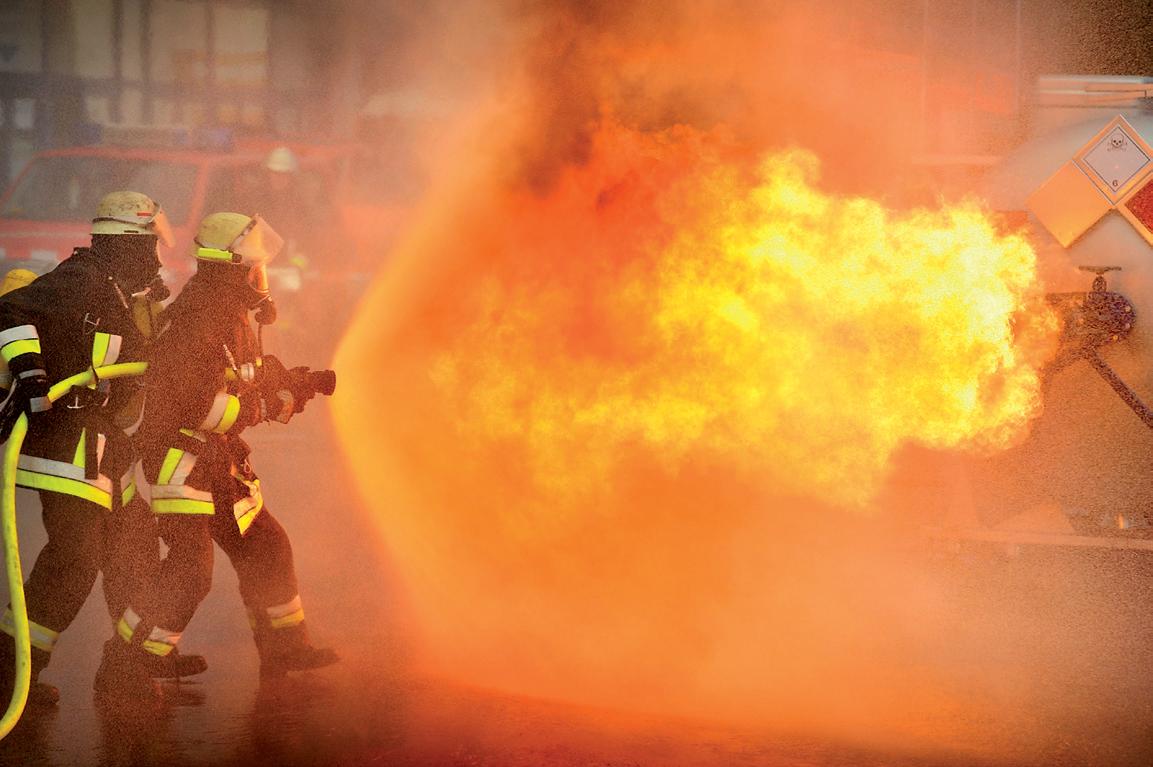
The responsibilities for security and fire protection are growing together in many companies. Security is taking account of this. At the last trade fair in 2008, companies and institutions dealing with all aspects of fire protection presented themselves in a compact form in one hall for the first time. The new concept met with great approval. Therefore, the exhibition section will be enlarged this year. On the occasion of Security 2010, suppliers of preventive fire protection, early fire detection and fire fighting will, with Hall 1, have more than twice as much area at their disposal. Under the heading ‘Fire Prevention’, the fire protection experts will congregate there. The concept of the fire protection hall will be implemented together with the partner of Security, Bundesverband Technischer Brandschutz (bvfa –Federal Association for Technical Fire Protection).
People play a great role in the security sector. Security provides information about training and introduces security and guarding possibilities by service providers. Moreover, manufacturers present the complete equipment for employees in the security field. The range on offer extends from the working and protective clothes via the personal equipment right up to close combat protection. It will also be possible to see special vehicles at Security.
For the first time, the fair will dedicate an independent special show to the service segment. Under the banner ‘Protection, Security and Service’, the cooperative booth covering an area of over 300 square metres in Hall 4 will be the central meeting place for security service providers. The participants will include Bundesverband Deutscher Wachund Sicherheitsunternehmen (Federal Association of German Guarding and Security Companies) and Bundesvereinigung Deutscher Geld- und Wertdienste (Federal Association of German Money and Asset Services) which will present their services. Security service providers, universities and the media will introduce themselves and will focus attention on the training and advanced training of the specialists while doing so.
Nowadays, companies must also be safeguarded virtually more and more, so IT security is one of the central questions of the people responsible for corporate security. Solutions for information protection and data security facilities will be shown at Security. The IT theme park in Hall 4 at Security will give practical answers to questions from people responsible for IT security. As already in 2008, exhibitors will present their innovative solutions there. IT security will also be a central field of the forums in Halls 4 and 1 where experts will, in lectures and
demonstrations, provide information on the subjects of security organisation, video, alarm installations as well as IT security. Upon request, visitors will receive the handouts and video recordings of the lectures. Until the next Security, it will be possible to retrieve this data from a separate homepage.
Traditionally, Security is the showcase for new products and services in the security and fire protection sectors. In the over 30-year history of the international trade fair, outstanding innovations and globally new products and services gave their premiere in front of the trade public. Messe Essen honours this innovation potential with the Innovation Award. It was conferred for the first time in 2008 and already met with an outstanding response on the occasion of this premiere. Over 70 companies had applied to be candidates and an eight-strong manufacturerindependent jury of experts examined their entries for innovation content, user benefits, economic viability and reliability. The closing date for entries for the Innovation Award 2010 is 1 July
1. The prize will be presented within the framework of a gala evening on October 4. FOR MORE INFORMATION Web:
“A
VERY effective yet simple and cheap solution.” Can this be true? Absolutely, say the manufacturers of Label Lock™.
A host of features hidden in these security labels means they cannot be replicated, but are easily monitored. This saves hours of productive time for logistics and security managers, airports, airlines, buildings and perimeter managers – and provides peace of mind for anyone who comes across them. Because the surface of each security seal changes dramatically once removed to display the words ‘OPENED’, these labels have uses for a wide range of items from CD and DVD cases and laptops to aircraft, doors and documents. Whereas a padlock can be picked, or more than one person may have legitimate access, these labels will tell you instantly if someone has gained entry. They can’t be replaced because each one has a unique sub-surface printed number. What’s more, there is no need to drill holes or install expensive monitoring equipment. ‘Just Label Lock™ and leave.’
The website at www.labellock.com tells you the rest, and includes a helpful

video of the labels in action. Distribution worldwide is handled through a network of carefully chosen distributor partners. So what are the security features?
Most so-called ‘security labels’ are made from a bulk supplied that usually just consists of a wallpaper ‘void’ text. Such materials are widely distributed, and so easily obtained by fraudulent printers.
Label Lock™ labels have a clear border, and no ‘wallpaper’void text, making it impossible to construct from bulk rolls of material. Even the unique serial numbers are encoded and are sub-
surface printed to ensure they can be traced but can’t be altered. So every label is unique, but available ‘off the shelf’ in convenient rolls, packed into numbered dispenser boxes. This removes the need for customisation, making life easier, quicker and cheaper.
‘Just Label Lock™ and leave.’
Use ‘no residue’ to protect aircraft, doors, hatches and panels and windows, exits and furniture.
Use ‘dual layer’ for documents, seals, plastic bags and disposables.
Label Lock is a brand name, and is manufactured solely and securely by Security Labels International, experts in bespoke tamper evident labelling. For more information on a wide range of security label solutions, please see the website at www.securitylabels. com. Covert and bespoke versions of Label Lock are also available, please contact us for more information.
FOR MORE INFORMATION
Tel: 01543 431099
Fax: 01543 431077
E-mail: sales@labellock.com
Web: www.labellock.com
AS A GLOBAL LEADER in the design and manufacture of integrated, high-security, outdoor electronic perimeter security systems, Southwest Microwave supplies broadranging sensor technologies and security management tools for precise, immediate detection of unauthorised site access. Here, several specialty microwave solutions highlight this organisation’s unique ability to meet the perimeter security requirements of environmentally-challenging, temporary and non-traditional detection applications.
EXPLOSIONPROOF SOLUTIONS
Oil rig disasters serve as devastating reminders of the relevance of security equipment built to withstand an ever-present risk of explosion. With chemically volatile sites like oil drilling platforms poised as prime targets for terrorist attack, Southwest Microwave’s Model 310B-33456 Explosionproof Microwave Link becomes a highly applicable solution. Designed to operate in the presence of flammable, combustible or easily ignitable materials, the Model 310B-33456 combines superior volumetric detection capabilities, water and corrosion-resistance, and a rating for operation in chemically hazardous conditions – making it an ideal solution for early detection of intruders attempting to infiltrate, and potentially devastate, an offshore drilling platform. Additionally, this specially rated device achieves reliable intrusion detection at oil refineries, chemical and petrochemical plants, petroleum or chemical storage facilities and other sites where hazardous materials are handled, processed or stored. Transmitter and receiver are packaged in weatherproof, explosionproof enclosures with front access to controls and test points. Systems operate at K-band (24.125 GHz) frequency, for optimal detection performance and resistance to external radar interference.
When temporary perimeter protection is in order, or in the absence of onsite power and data lines, Southwest

Microwave’s M.I.L. PAC Relocatable Microwave Detection Sensors are today’s trusted solution. Originally developed for Military applications requiring protection of strategic high-value equipment, personnel and infrastructure, the superior reliability and rapid-deployment capabilities of M.I.L. PAC sensors make them a dominant choice for the utilities and defence industries and a staple for the protection of visiting VIPs and critical mobile assets such as trucks or aircraft. Available in bi-static or monostatic configuration, these portable K-band outdoor sensors provide extremely high probability of detection with negligible nuisance alarms. The M.I.L. PAC 316 Microwave Link features 244metre detection range and 135-hour battery life, and is ideal for operation within narrow corridors. The M.I.L.PAC 385 Microwave Transceiver offers 122metre detection range, zero range suppression and 103 hours of continuous operation. Patented Range Cut-Off on the transceiver makes this sensor immune to targets beyond a pre-selected range. M.I.L. PAC sensors can be used on gates, portals or roadway crossings or to establish a full perimeter of volumetric detection. State-of-the-art circuitry, precise detection pattern and ease of setup with lightweight tripod and tampered external controls provide unmatched versatility. For added flexibility, monitoring is achieved either through a static receiver linked to an alarm panel or via battery-operated receiver.
With today’s complex, high-volume air traffic flow, aircraft mobility control at the world’s busiest airports has become an increasingly relevant public safety concern. In a traditional scenario, stop-bar warning lights indicate to pilots when to halt or move an aircraft on the tarmac. However, poor visibility, extreme weather conditions or human error can have disastrous – even deadly – effects. Southwest Microwave’s Model 316-33457 Stop Bar Control Sensor allows airport control

tower and safety personnel to effectively detect aircraft (or vehicle) movement between taxiway and active runway.
Engineered specifically for applications where external radio frequency (RF) radiation is prevalent, the Model 31633457 specialty K-band microwave link employs a unique shielded radome for added protection against radio-frequency interference (RFI) from aircraft and airport control systems, radar and other RF-based equipment. Electromagnetic compatibility (EMC) protection prevents interference between the sensor’s energy signal and onsite RF-based equipment, making it an exceptional on-ground traffic control solution.
Narrow band receiver design provides unmatched detection performance by alarming on partial or complete beam interruption, increase or decrease in signal level or jamming by other transmitters. Automatic Gain Control (AGC) allows the receiver to compensate for varying site or environmental conditions.
The sensor’s compact, weatherproof housing withstands harsh temperature and environmental extremes and provides optimal resistance to wind loading. For added nuisance alarm protection in low-temperature or wet environments, a hydrophobic variant is available to prevent the build-up of water, ice or snow on the unit.
Southwest Microwave’s mission is to provide industry-leading system design resources, leading-edge technology options and unparalleled customer support tools to ensure reliable, long-term perimeter detection solutions for the infrastructural, asset and personnel protection challenges of our global client base.
For more information or to arrange a demonstration please contact our European subsidiary, Southwest Microwave Ltd., based in Worcestershire, UK. Tel: +44 (0) 1386 75 15 11 or visit

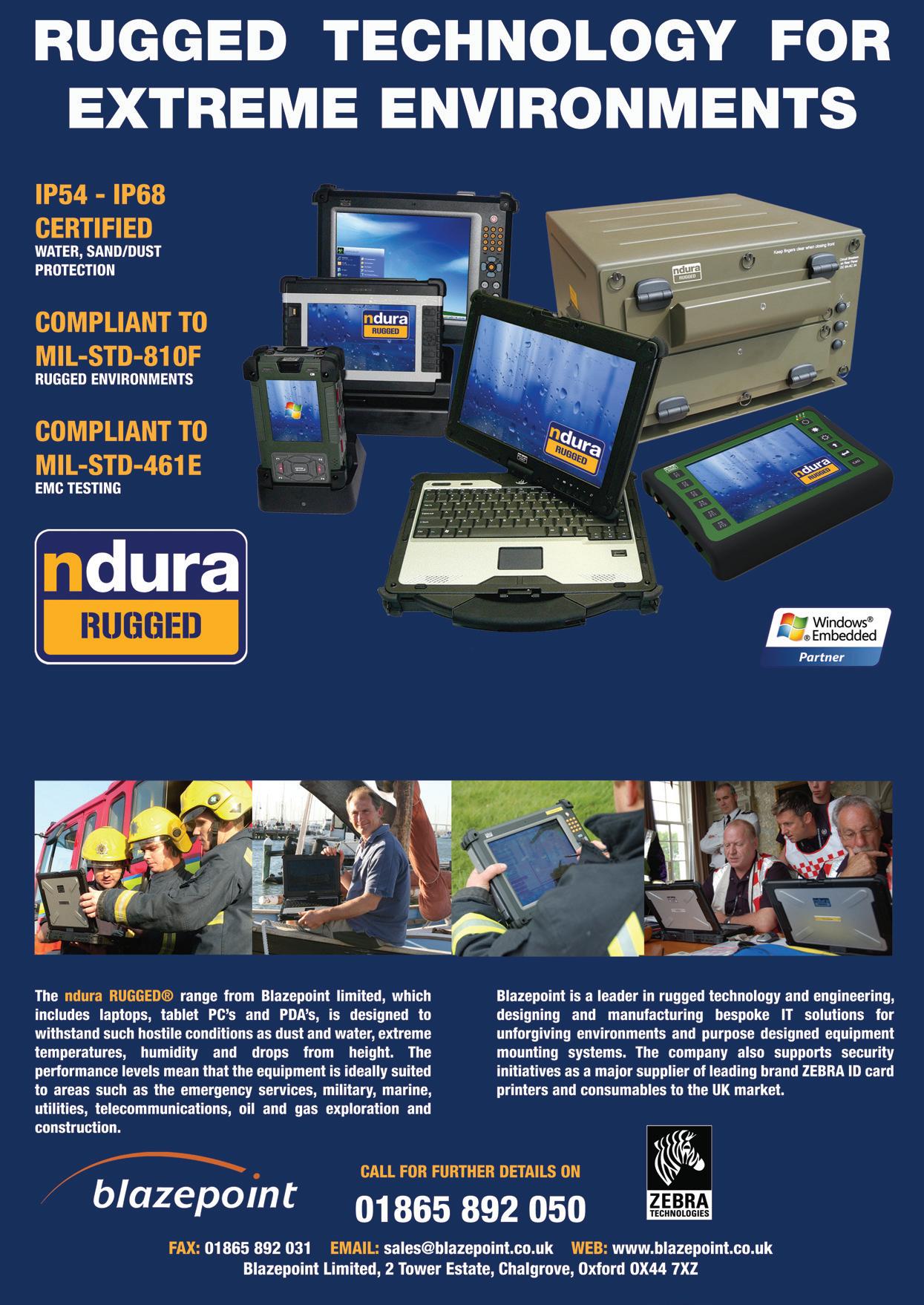
The Dutch arm of British security company Selectamark has won a major contract to protect the main rail infrastructure in the Netherlands from metal theft, using the latest in forensic marking products
SELECTAMARK’S distributor, Rhine Group BV, has been awarded the contract by Dutch rail company ProRail BV to combat trackside metal theft using SelectaDNA, an invisible spray solution featuring a unique, synthetic DNA code. Driven by continuing global demand for metals such as copper, the Netherlands is among many countries including the UK, to struggle with the problem of trackside metal theft, which not only disrupts rail services but also causes substantial damage to signalling equipment, posing serious danger to passengers. Copper is a fantastically attractive metal to steal. It is often left out in the open on railways and around substations just asking to be stolen. In drumb format, it is easy to move despite copper’s relative weight.
The increased risk of stealing, transporting and handling SelectaDNA-marked copper and other metals is expected to deter thieves and have a significant impact on the number of incidents.
SelectaDNA is a proven, highly successful crime deterrent strategy and is used by an increasing number of Police forces, residential home owners, businesses, retail outlets, local governments, schools and hospitals in the United Kingdom, New Zealand and The Netherlands. ProRail will be deploying SelectaDNA’s technology to mark trackside metals with the product’s unique DNA signature, which is highly resistant to sunlight, withstands temperatures of up to 1,000°C and can be identified and analysed on the spot.
The unique chemical composition of the marking can be identified with a portable DNA scanner. The DNA marking is immediately visible under ultraviolet (UV) light and contains metal microdots with an engraved coding that can be analyzed with a small USB-microscope.
This technology provides Police with immediate forensic proof of where stolen metal has come from, enabling them to prosecute criminals using an indisputable chain of evidence.
Donald van der Laan, general manager of Rhine Group, said: “When we started to look at the problem of copper theft in 2008 it became obvious to us that solutions that were available at the time had several serious flaws.
“Most importantly, if the presence of a marking on a piece of metal could only be determined under UV light, scrap dealers could be misguided into believing
that material that does not ‘light up’ under UV is not stolen – even if it was offered to them by dubious sources.”
Mr van der Laan continued: “Therefore, we set out with our partners to develop smart marking technologies that overcome these flaws, providing a broader toolset to Police and a much more serious deterrent to criminals.”
The detection and analysis technology can also be made available to scrap metal dealers so they can check for markings on metal being offered to them. In the UK, scrap dealers found in possession of railway metal could be charged with handling stolen goods as Network Rail disposes of metal through one national company and it does not use local salvage yards.
SERVICE DISRUPTION
In the north-east of England, the Wearside area has been one of the worst hit by gangs who steal metal from train lines and try to sell it for scrap. As well as costing more than £5.2million, the gangs also cause frequent disruption to train services.
Meanwhile, in the north-west, police have been hunting a gang in connection with a string of metal thefts in and around Bolton’s railway network. Detectives working for British Transport Police have been investigating the gang, who they believe have made between £40,000 and £50,000 by selling stolen metal over a six-month period last year after posing as legitimate rail workers.
Detective Sgt Mellish, who is leading the Bolton investigation known as Operation Ariel, has warned that scrap dealers caught trading in stolen railway metal will be prosecuted. He said: “Scrap metal dealers should not be accepting railway scrap. In every case, it will have been stolen.”
Selectamark Security Systems plc, 1 Locks Court, 429 Crofton Road, Locksbottom, Kent, BR6 8NL.
Tel: +44 (0)1689 860757
Fax: +44 (0)1689 860693.
E-mail: sales@selectamark.co.uk Web: www.selectadna.co.uk
Copper is a fantastically attractive metal to steal. It is often left out in the open on railways and around substations just asking to be stolen. In drumb format, it is easy to move despite copper’s relative weight. The increased risk of stealing, transporting and handling SelectaDNA-marked copper and other metals is expected to deter thieves and have a significant impact on the number of incidents

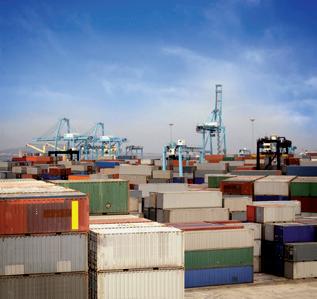




















TRANSPORT SECURITY is the only event globally to bring together the full spectrum of key stakeholders and industry leaders from the areas of aviation, maritime and the supply chain under one roof, creating three events in one.
The event features an exhibition, conferences, workshops and networking receptions to bring together all aspects of the industries it serves to review the latest information on current and future threats, debate best practice, gauge industry opinion and review the latest technologies.
Transport Security moves to London for 2010 and will take place in the worldrenowned Olympia Conference and Exhibition centre 14-15 September. The shift in venue comes two years ahead of the capital playing host to the 2012 Olympic Games and at a time when organisers are shifting into top gear to ensure the safety and security of the Games.
“The move has been planned to coincide with the build up to the 2012 Olympic Games and is designed such that those tasked with ensuring these Games are both safe and secure, have access to the brightest minds and are able to assess the latest security technology as they make final preparations for this global event,” comments Peter Jones, managing director, Transport Security Expo.
With the city expecting to play host to almost 10 million spectators for the Olympic Game and the Paralympic Games, the organisers are aiming at the goal of this mass of humanity arriving and departing venues either by public transport, bicycle or on foot. The imperative for planners is therefore to ensure the best and most effective security solutions are deployed network wide.
The event brings regulatory bodies together with industry professionals and leading thinkers and featured two two-day high level conferences focused upon aviation, maritime and supply chain security, multiple specialist workshops and an extensive exhibition of the latest equipment from vendors in the transportation security market space.
Delegates attending the Transport Security Expo aviation security conference will discover the implications of these two events on an industry caught between the rock and a hard place of delivering meaningful and effective security in the continually challenging economic environment it finds itself in. Both revision and introduction of new European Union (EU) regulation


The event features an exhibition, conferences, workshops and networking receptions to bring together all aspects of the industries it serves to review the latest information on current and future threats, debate best practice, gauge industry opinion and review the latest technologies
(particularly in respect to Liquid, Aerosol & Gel detection) will also impact heavily on airports in the coming couple of years, thus financing of new security initiatives will also feature. Meanwhile, the industry continues to debate the pressing need to improve the customer experience while meeting the statutory requirement to ensure appropriate security controls.
The North Atlantic Treaty Organisation (NATO) Shipping Centre (NSC) offers maritime world delegates attending Transport Security Expo & Conference 2010, the opportunity to take part in a unique tactical floor exercise, which will follow a vessel’s voyage from departure in Rotterdam to the attack point in the Gulf of Aden, through its capture and on to its eventual release.
This highly specialised full-day exercise offers much in the way of both mission critical and real world advice designed to aid in the safe passage of shipping through such pirate infested waters.
The International Maritime Organisation (IMO) conference will complement the tactical floor exercise with its clear focus on an examination of both current and
future international policy and regulations in respect of maritime security and how this impinges on the shipping industry.
With EC regulation 300/2008 having just become law and much debate consequently still raging between regulators and within the industry over how best to achieve compliance, the key issues will be outlined and discussed in detail at the forthcoming Transport Security Expo & Conference. The event is expected to bring focus to the fundamental issues the regulation raises, help in identifying who within the extended supply chain has responsibility for what and attempt to answer the vexed at what cost question.
Principal speakers from the International Air Transport Association (IATA), Association of European Airlines (AEA), Swissport, CEVA Logistics, Cargolux and DHL amongst others, will be on hand to share knowledge and invite in-depth discussion on achieving a 100 percent cargo screening regime within a one-stop security environment.
FOR MORE INFORMATION
Web: www.transec.com



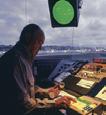
Security is not just something we do at ARINC – it’s part of who we are
For years, we’ve helped develop and implement solutions for commer cial, gover nment, and defense industries to help strengthen security around the globe
Whether it’s sending and receiving infor mation securely, providing mobile wireless networks, suppor ting systems that guar d nuclear power plants, or developing the latest biometric tools, ARINC delivers
As a capabilities-driven company with communications, engineering, and integration as our core competencies – you can tr ust us to handle your greatest security challenges



YOU CAN RUN but you can’t hide! That’s the message to criminals trying to escape justice by fleeing abroad, as well as those travelling between countries to engage in illegal activities.
In an era of mass global travel – aircraft passenger numbers alone are forecast to reach well over two billion in 2010 –Electronic Borders are proving to be an impressive ally in the fight against crime.
Many thousands of lawbreakers have been brought to justice thanks to the Advance Passenger Information System (APIS) under which growing numbers of governments require airlines to capture passenger details prior to departure.
In the UK alone, API triggered 70,000 alerts in 12 months. These led to 5,250 arrests for crimes ranging from drug dealing to murder.
API is one element of the low-cost Electronic Borders immigration data service portfolio developed by master
Aviation Organisation (ICAO)-defined machine-readable travel documents (MRTDs) such as a passport. The data is subsequently translated into the format required by the border control agency in the destination country where it is not only checked against computer databases and watch lists but also used for immigration processing, security and customs purposes.
Governments in the USA, Spain, China, Syria, Kenya and Morocco are among those which require API before allowing travellers to enter their country. Some governments demand API only from airlines that fly specific routes that are deemed to be high risk. There is a substantial per-passenger fine for carriers that fail to provide this information. API and PNR use resources more effectively. If API has a shortcoming it is that the information is forwarded to the destination country only after take-
Information exchange is a key factor in the fight against crime and technology facilitates international cooperation on a previously unimaginable scale. Electronic Borders is just one of ARINC’s cutting edge technology solutions designed to enhance security throughout the entire travel process
systems integrator ARINC, which has been providing security solutions for commercial, government, and defence industries for many years.
The Electronic Borders service offers a unique solution for border control agencies, airlines, airports and seaports that have to wrestle with multiple international data requirements. It enables them to meet the most stringent security and immigration demands world-wide with a single interface and a common-language application that translates messages from disparate agencies and systems.
There are three elements in ARINC’s Electronic Borders service – Advance Passenger Information System (APIS), Interactive APIS (iAPIS) and Passenger Name Record (PNR) processing. APIS captures biographic data and travel details of all passengers and crew members on commercial and charter airlines and cruise ships before departure. This information is stored and processed electronically using International Civil
off. So, although API makes it easier to process low-risk travellers and harder for unauthorised or suspect passengers to slip through the net, the post-departure risk assessment could conceivably result in a costly recall or diversion if checks against watch lists reveal a suspect passenger.
This problem can be overcome with the use of iAPIS which allows airline staff to conduct a real-time pre-boarding check against immigration databases. At the same time, the information is circulated to relevant agencies – police forces, customs officers, INTERPOL and intelligence services. No passenger can be issued with a boarding pass until specific authorisation has been received. Security is further enhanced when API or iAPIS is used in conjunction with PNR, which captures information from the airline reservation system, providing details of how and by whom tickets are booked and paid for, plus relevant addresses and telephone numbers. These facts give border control agencies, law enforcement organisations and intelligence services a significant head-start on checking

names against watch lists, identifying suspect travel patterns, calculating potential risks and locating suspects.
The capture of increasing amounts of personal information gives passengers real concerns about data protection. However, ARINC’s fully-managed AviNet global communications and message switching network provides the end-toend security that is impossible with a public internet connection. This protects passengers’ privacy while allowing carriers to meet their legal obligations. Among governments using ARINC’s immigration data services are Bermuda, South Korea, the USA, the UK, CARICOM, Spain, Hong Kong and several European and South American countries.
While complying with industry standards and guidelines defined by international trade organisations and governments, ARINC’s Electronic Borders service can be tailored and scaled to meet specific customer requirements. Airlines can select the service that best suits them – Type A Host to Host, Type A Host to Terminal, Type B, Type X (XML) and the manual method. ARINC can also provide a network protocol conversion service delivering any customised data format required. Such versatility assists project implementation by meeting both the requirements and budgets of individual airlines. Information exchange is a key factor in the fight against crime and technology facilitates international cooperation on a previously unimaginable scale. Electronic Borders is just one of ARINC’s cutting edge technology solutions designed to enhance security throughout the entire travel process.
FOR MORE INFORMATION
Web: www.arinc.com


sure your informed
HE INCREASING sophistication and diversity of terrorist methods makes ever tougher demands on counter-terrorism activities and the ongoing threat has placed greater pressure on intelligence and policing agencies. Following the General Election, Britain stands with a new Conservative - Liberal Democrat coalition at its helm. Although the new government has put national security as one of its primary responsibilities and will be establishing a National Security Council, the impact of changing policies and reduced budgets will make it essential for all counter terror agencies to continue to work collaboratively to ensure public security. With its breadth of international experience, the UK is well placed to tackle terrorist threats as they arise and UK companies continue to provide expertise and systems for ground-breaking counter terrorism solutions. The UK is also a world leader in CBRN defensive equipment and in the manufacture of security detection technologies such as x-ray and other innovative new products. The Emergency Services Show 2010 will give visitors the opportunity to speak to a unique mix of commercial and non-commercial exhibitors, from the manufacturers who showcase their latest products to the emergency services who demonstrate how this equipment is actually used. Exhibitors this year include Bluecher, Government Decontamination Service, NBC, Police CBRN training centre, Remploy Frontline and Respirex. A full exhibitors list is available at www.ess2010.com.
TThe Emergency Services Show was started in 2006 to facilitate collaboration following the publication of The Civil Contingencies Act 2004 by providing access to the latest technology, ideas and initiatives and is now more relevant than ever. As the UK’s only event for everyone involved in emergency planning, response or recovery, it promotes multi agency collaboration by bringing together everyone in the UK involved in emergency situations.
As the importance of security to individuals, to business, to governments and to nations grows year on year, the UK continues to lead the way and is viewed as the model for quality – from counter terrorism strategies to fire and safety measures. The Emergency Services Show 2010 will provide access to the latest technology, ideas and initiatives focused on improving public safety and protecting the environment and the Critical National Infrastructure. The show will be especially relevant in light of the current economic climate, with opportunities to speak to contemporaries and exhibitors to help with framework agreements, income generation/outsourcing and equipment requirements.
The two day supporting conference will provide delegates with the opportunity to join like minded professionals to discuss the latest news, developments and strategic advances as well as hearing about lessons learnt and new initiatives from a range of high profile speakers. The full conference programme is available at www.ess2010.com.


British expertise is frequently called upon to deal with international incidents and natural disasters where specialist skills are needed.
The UK’s emergency services and associated agencies are held in high esteem worldwide and its breadth of knowledge and experience has been instrumental in creating global standards. This is recognised at The Emergency Services Show 2010 in Hall 1 which includes the growing Blue Light Zone – bringing together Police, Fire and Rescue and Ambulance services from around the UK to showcase initiatives and share examples of best practice, and the popular Emergency Response Zone – made up of other Category 1 and 2 responders, professional, government and voluntary organisations, offering perfect networking opportunities to affiliated organisations.
New for 2010, there will be a dedicated UK Search and Rescue (SAR) Zone featuring British Cave Rescue, Lowland Rescue, Maritime Incident Response Group (MIRG), MCA, Mountain Rescue England & Wales, RAF SAR and the RNLI.
To reflect the importance and popularity of this event, exhibition space has been increased to meet demand. The new Hall 3 will incorporate the larger displays of specialist equipment and vehicles previously shown outside. Under cover and protected from the elements, exhibitors will show the latest products, innovations and services, including practical demonstrations.
The UK has long established record of large scale sporting and leisure events from Royal Ascot and Wimbledon to Glastonbury festival. The 2012 Olympics will be a major opportunity for the UK to prove its expertise but will also present a major challenge. As 2012 Olympics draws nearer, it will be vital for responders to discuss co-operation, discuss ideas and initiatives focused on improving public safety and learn from each other in preparation for this major event and will be a main focus at The Emergency Services Show 2010 both for exhibitors, visitors and as part of the supporting conference.
Following the success of last year’s event, which attracted some 4,000 attendees, The Emergency Services Show 2010 will provide more opportunities to network and improve your relationships with other organisations to learn how you can work together more effectively to tackle the changing nature of today’s security challenges.
The Emergency Services Show 2010 will take place on Wednesday 24th and Thursday 25th November at Stoneleigh Park, Coventry. Register now at www.ess2010.com or visit to learn more about attending, exhibiting and see the conference programme.
For the 38th successive year, IFSEC delivered a first-class event for the international security industry when it took place from 10-13 May at the NEC Birmingham
ESTABLISHED AS THE world’s largest annual security event, thousands of visitors descended on Birmingham to see more than 750 industry-renowned companies showcase their latest developments and take advantage of more than 30 hours of free educational content.
James Blue, director of Fire & Security at UBM Live, organisers of IFSEC, said: “As the economy continues its recovery, the security industry was in buoyant mood over the four days of IFSEC 2010. With business being generated across all three halls of the event, thousands of security professionals benefitted from more than 750 exhibitors and a vast amount of free seminars at the NEC Birmingham. The results were fantastic with positive feedback from
• Fire Solutions.
Axis, Dallmeier, Genie CCTV, HIK Vision, IndigoVision, JVC, Norbain, Panasonic, Samsung, Sony and Tyco were amongst those exhibiting. IFSEC has long been the platform for these companies to launch their new products and 2010 proved no different – Axis, for example, took the opportunity to demonstrate their series of highperformance, outdoor-ready pan/tilt/zoom (PTZ) domes, including two HDTV models, at the event. Within the exhibition there was also seven dedicated international pavilions in which visitors could seek the latest products and services from all over the globe.
Supported by the US Commercial Service, IFSEC 2010 featured its first US Pavilion. Based in hall 4, this pavilion
As the economy continues its recovery, the security industry was in buoyant mood over the four days of IFSEC 2010. With business being generated across all three halls of the event, thousands of security professionals benefitted from more than 750 exhibitors and a vast amount of free seminars at the NEC Birmingham
both our visitors and exhibitors and we look forward to continuing our success with our global IFSEC events in Africa and India throughout the year.”
Visitors to IFSEC 2010 were able to explore the latest security products and services available both in the UK and worldwide. The extensive exhibition was organised into the following categories:
• Integrated Security/IP & Network Solutions
• Access Control
• CCTV
• Intruder Alarms
• Counter Terror & Physical Security
• Security Solutions

housed a plethora of innovative manufacturers, allowing visitors to source US security products and services in one concentrated location. Commercial staff from the U.S. Embassy in London were on hand to answer any queries.
In addition to the US, visitors could source products and services from Belgium (new for 2010), China, France, Italy, Korea and Taiwan. Furthermore, the Secartys association, a voluntary organisation which represents more than 1,200 industries in electronics, information technology, telecommunications and solar energy across Spain, also introduced new Spanish exhibitors in the different product areas within the exhibition.

The annual ‘Meet the Buyers’ event, which provides UK exhibitors with unrivalled access to international buyers of security products and services, was also a great success. Through strategic partnerships with UK Trade & Investment/ UKTI Defense & Security Organisation and British Security Industry Association (BSIA), IFSEC invested in bringing 125 buyers from all over the globe to the event as part of the Inward Missions programme. A record-breaking 722 meetings took place which demonstrates the importance placed on this initiative to the international buyers’ UK trade network. Free-of-charge seminars ran in the New Products & Technology Showcase Seminar Theatres (one in hall 4, the other in hall 5) so visitors were able to hear about the latest developments in this evolving industry. Also within the exhibition, the new Loss Prevention Certification Board (LPCB) Red Book Pavilion housed seminars and presentations based on all aspects of LPCB third party approvals, training schemes and research relating to physical security. The freeof-charge educational programme was led by industry experts from the LPCB and dedicated staff were on hand to answer any questions.
Returning for 2010, the IFSEC Conference delivered an unparalleled educational programme packed with carefully researched high-level content aimed at senior security professionals. Running alongside the IFSEC 2010 exhibition, the content took a fresh and unique look at the key issues facing the security industry, including countering terror, protecting critical national infrastructure, preparing for London Olympics 2012, corporate security issues, security guarding and recent technological developments. Each day of the Conference was dedicated to a different area of security:
• Day one: Countering Terror and Protecting the Nation
• Day two: Corporate Security in the Recovering Economy
• Day three: Next Generation Technologies The high-level seminars were delivered

by some of the most senior players in the industry, including Prof Adam OgilvieSmith, Industry Secondee, Office for Security & Counter-Terrorism, Home Office; Chris Phillips GCGI, MSyl., DCI head of The National Counter Terrorism Security Office (NaCTSO) and Don Randall MBE, head of Security, Bank of England. Finally, the IFSEC Security Industry Awards, organised in association with the British Security Industry Association (BSIA), acknowledged the people, products and technological advancements that have played
• Guarding Service Product of the Year: Marks and Spencer Plc – Securitas Security Services
• Integrated Security Product of the Year: Closed IP TV – Dedicated Micros
• Intruder Alarm Product of the Year: Moviwall – Hymatom
• Physical Security Product of the Year: Terra Mount Blocker – Frontier Pitts
• Policing Partnership Product of the Year: Westfield Shoppingtowns Ltd/ VSG/Police Service of Northern Ireland – Westfield CastleCourt and Belfast
I’ve worked in a number of industries in the past and I’ve been involved in very many trade shows and IFSEC is one of the best I have ever attended. It’s been absolutely marvellous for the Association
a big part in the security industry over the past year. Presented by former Cabinet Minister Michael Portillo, the 2010 winners were:
• Access Control Product of the Year: Smarti Guardeon – Tab Systems
• CCTV Camera Equipment Product of the Year: WV-CP500 – Panasonic System Networks Europe
• CCTV System Product of the Year: BriefCam VS Online – BriefCam
• Communication Product of the Year: QlinQ – SafelinQ UK Ltd
CitySafe Retail CrimeWatch Partnership
• Security Project or Installation Product of the Year: South African Airports – DVTel
The testimonials received from exhibitors demonstrate the event’s success:
James Kelly, chief executive, BSIA, said: “I’ve worked in a number of industries in the past and I’ve been involved in very many trade shows and IFSEC is one of the best I have ever attended. It’s been
absolutely marvellous for the Association.”
Phil Doyle, regional director, Axis Communications, said: “The show has been very international this year which has been fantastic. We’ve met a lot of end users […] and a number of system integrators obviously, which again has been fantastic for us.”
Steven Smith, sales and marketing director, ISM, said: “We’ve had exactly the right mix of people coming through the stand from not just within the UK but globally.”
Visitors were equally impressed with this year’s event: “It’s been very interesting. I’ve seen some new developments, it’s always a good opportunity to meet customers and suppliers so it’s been very good.” “Impressive the new technology…where it was five years ago and where it is now. CCTV, door entry systems…pretty much A-Z about security.”
“All the exhibitors I was looking for are here.” “All the major players certainly have a presence here which is the main thing.” “It keeps you up-to-date with where technology is at the moment so I’m very impressed.”
IFSEC is returning in 2011 to the NEC Birmingham from 16-19 May. Please visit www.ifsec.co.uk, follow us on twitter@IFSEC and join our LinkedIn group for the latest information on the event. Companies interested in exhibiting at IFSEC 2011 should contact Charlie Cracknell on +44 (0)20 7921 8069 or at charlie.cracknell@ubm.com




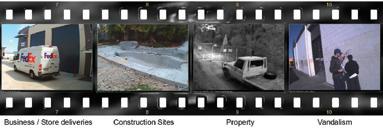
HILST MANY EXHIBITION and display companies talk about environmental compliance, only one blazed the trail and continues to deliver. Nimlok began 40 years ago, creating a portable exhibition system that was convenient and cost-effective. At that time no one considered that this would form the foundation of an environmentally friendly modular system now in use in over 50 countries. In fact, every minute, of every day, a Nimlok exhibition solution is being assembled somewhere in the world. First in the industry to obtain ISO14001, an environmental management system designed to rigorously drive improvement in an organisation’s environment impact, and first to be fully accredited for BS8901 and listed in the top 20 green companies by the Sunday Times. Yet, this all works in perfect synergy with our offer. At Nimlok we work with you to understand your exhibition objectives, create the right solution and deliver beyond your expectation. With a custom modular exhibition stand, the possibilities are endless and the potential is limitless. Where else can you see your exhibition stand or display assembled for approval prior to going to the exhibition? Where

else does the whole service emanate from under one roof ensuring perfect coordination and harmony of hardware, graphics, video content, design, support campaigns and even installation? And crucially, what custom stand can be reconfigured for all eventualities so you and others within your company can treat it as an asset, rather than an overhead? Your exhibition solution can extend as your business grows, or for one-off larger installations, hire modules offer maximum impact for a minimal investment. Custom modular hire solutions, where the basic architecture (walls, doors, counters, lights etc) are rented at a fraction of the purchase cost, leave just the graphics and any custom features to be purchased. This is perfect for short term lower cost exhibiting or those with
just one or two events where owning a large exhibition stand would not be cost effective. Whatever the solution, the custom modular exhibition stand delivered to the show floor will be unique to you and to your exhibition requirements. Nimlok provides the most viable event environments in the world today for organisations as big as the Highways Agency and as small as the latest start ups. Over 1,000 companies trust us each year to deliver their needs and give them the maximum return for their investment. Isn’t it a natural fit that you should too?
For more information on Nimlok’s exhibition and event solutions please visit www.nimlok.co.uk or call 0800 0778 864.

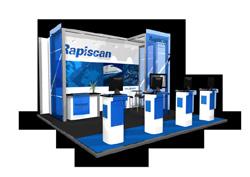
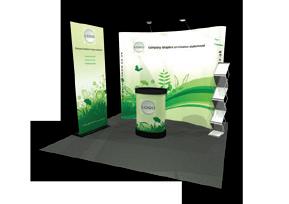





Record attendance at Counter Terror
IN EXCESS OF 6,900 attendees passed through Olympia’s National Hall doors for Counter Terror Expo 2010 in April, succinctly demonstrating that the threat from terrorism remains acute and demand for solutions to the issues we face continues to be high. Held against a backdrop of a world beating high level conference programme and multiple specialist workshops, some 327 brand leaders in the counter terrorism sector exhibited the latest techniques and technologies to a global market space fully expected to double in value over the next eight years.
The very high attendance figures indicate that the threat from international terrorism has not abated. The attack on a Detroit bound airliner in December of last year and the more recent bombings on the Moscow metro system are but two examples. Such
continuing attacks worldwide demonstrate that much still needs to be accomplished to protect assets and people from those with the intent to do harm.
Whereas terrorist attacks were historically seen as attacks against the State and therefore for the State to address, recent years have seen a recognition build within the corporate world globally that it also has a role to play in protecting physical assets, workforce, and customer base. Consequently, the marketplace continues to expand exponentially,” comments a spokesperson for Counter Terror Expo. Britain itself ranks sixth globally in terms of value of sales in the counter terrorism sector and believes it can expand with what it calls a leading edge in surveillance and bomb detection.
Focused specifically toward the needs of the counter terrorism sector, the event is firmly established as the top global forum in
Continued on page 74


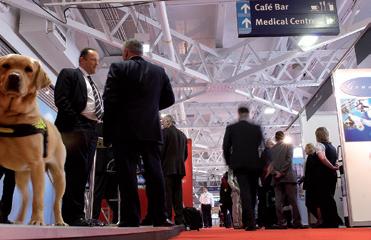
DMS TECHNOLOGIES, accredited to ISO9001:2008, has been providing battery-based portable power solutions for over 20 years, designing bespoke power systems and solutions to customers’ specifications and power requirements. We can provide technical support during every step of the design process. We will work with you to develop a comprehensive specification. DMS technologies has supplied bespoke solutions for petrochemical, telecommunications, medical, marine and military industries. With a dedicated design, test and development section as well as extensive manufacturing capability and warehousing facilities, DMS technologies is well placed to meet the demands of both standard and custom-built product. Within our premises we have access to the latest electronic test equipment, and our capabilities include faultfinding and test evaluations.
The ambient operational, charging and storage temperatures can have a huge effect on the performance and lifespan of any battery system. At DMS technologies we have extensive experience in providing power solutions for extreme temperature applications. Many applications require

Standard products include NATO-approved
the UK MOD and other defence forces globally. Our high rate power pack range has been used for NATO Class A and Class
B vehicles and aircraft by the military for many years. Our design team also have experience in designing to comply with military defence standard testing (Def-Stan). Equally, our commercial packs are in use with professional fleet vehicle operators and vehicle recovery organisations throughout Europe. Recent additions to our range are remote portable power units designed to be used by tactical teams requiring clean, silent rechargeable power to run such equipment as surveillance systems, including CCTV, perimeter protection and lighting. Charging is the most over-looked element of any battery power application. DMS technologies has a broad knowledge and experience in charging techniques, issues and testing. We have our own range of charger products, which we can specify and programme to your requirements. If you have an unusual or specialist application we have the necessary experience in designing bespoke charger systems.
FOR MORE INFORMATION
Tel: +44 (0)1794 525400
Fax: +44 (0)1794 525450
E-mail: sales@dmstech.co.uk
Web: www.dmstech.co.uk
which to debate the threats we face, discuss solutions to them and identify leading providers to do meaningful business with.
Such has been the unprecedented demand from the sector, that Counter Terror Expo will move to the much larger Grand Hall of London’s prestigious Olympia Exhibition and Conference Centre in 2011. The move provides additional exhibition space, enhanced conference facilities and improved services for those attending or visiting the event including fast track registration.
Counter Terror Expo 2011 is already a near sell out with around 500 of the world’s leading solutions providers expected to attend. Counter Terror Expo 2011 will be held 19-20 April.
Counter Terror Expo is the world leading gathering of internationally renowned experts in the field together combined with the world’s leading exhibition of technique and technology solutions. Held annually in the host city of the 2012 Olympic Games, this world beating gathering is the principal calendar event of the year for counter terrorism professionals from across the globe.
Counter Terror Expo is a secure exhibition showcasing the latest is specialist security technologies, products and solutions that form a crucial part of counter terror capabilities internationally. Counter Terror Expo offers a forum for senior buyers and specifiers to see the latest solutions that will assist in the prevention and protection from terrorists globally.
This years Counter Terror Expo provided a high level conference featuring over 75 leading international expert speakers who will debate the most critical and topical issues concerning the international counter terrorism community. The conference featured multiple streams covering: Infrastructure & Utilities, Transportation, Large Scale Events & Venues, as well as Border Control & Immigration, and Agency Co-operation & Information Sharing.
The centrepiece of this leading international event for security and counter terrorism was the prestigious two-day conference featuring leading international expert speakers debated the most critical and topical issues concerning the international counter terrorism community. As the international community grapples with the formidable and evolving threat from terrorism, governments, private businesses, and law enforcement and the security agencies in every country, together with their partner agencies, must be forever improving their response strategies and building new capabilities to defeat terrorism.
‘Countering Terrorism in a Changed World’ offered two streams of keynote and case study sessions from an impressive array of national and international expert speakers who will share their unique focus on the most significant global security issues. Delegates, themselves experts in their fields, contributed to the debate and discussion to provide a truly invaluable and memorable conference experience.
The conference also included a stream dedicated to ‘Protecting Crowded Places’
produced in association with the National Counter Terrorism Security Office (NaCTSO).
In addition to the main conference, Counter Terror Expo 2010 also featured a range of practical and technology focused workshops. The workshops format allowed an in-depth look at specific issues and policy, and provided a focused forum for debate. In addition technologies being deployed in the counter terrorism arena will also be explored through a series of real life case studies to provide understanding on the equipment and its role in the fight against terror.
Attendees had the opportunity to hear from key technology providers and experts as to the abilities and limitations of existing security systems. In addition future trends, threats and emerging technologies were debated during the panel discussions.
FOR MORE INFORMATION
For more information about Counter Terror Expo, contact Nicola GreenawayFuller on 020 8542 9090 or e-mail ngreenaway@niche-events.com
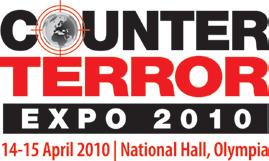
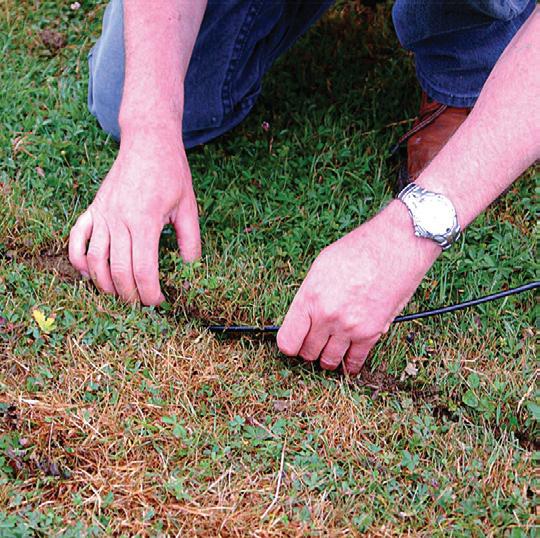
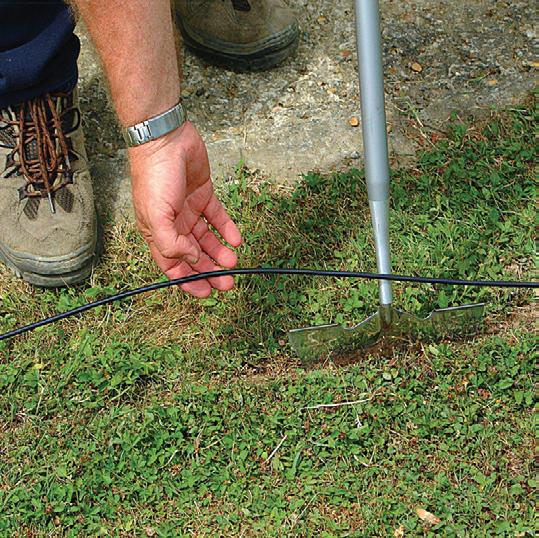



The Sonaflex covert buried sensor is ideally suited for locations that require a discrete covert sensor that is both cost effective and simple to install without the necessity for major groundwork’s. As the sensor is passive, it is not compromised by existing utility cables or water pipes within the sensor proximity. Field proven in many demanding high security installations, the Sonaflex buried senor is the ideal choice where performance and reliability is a key requirement.
